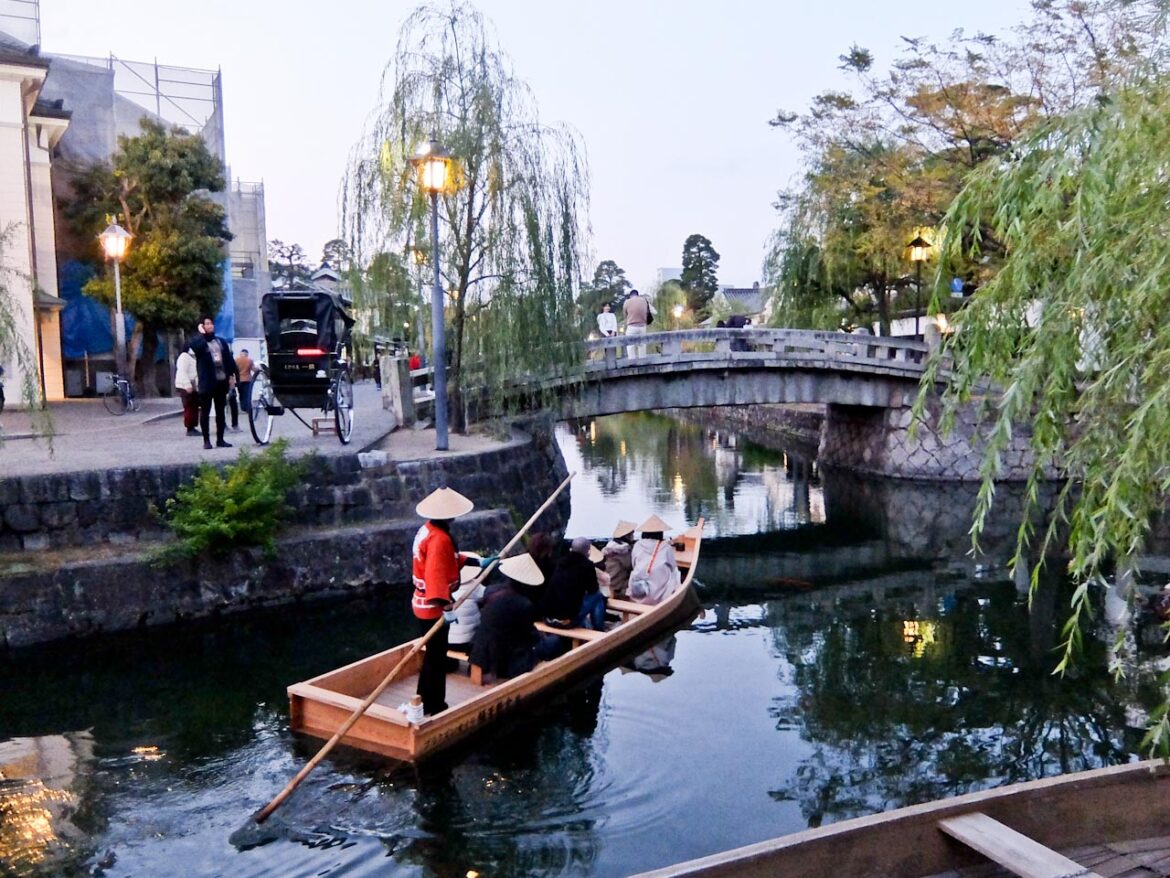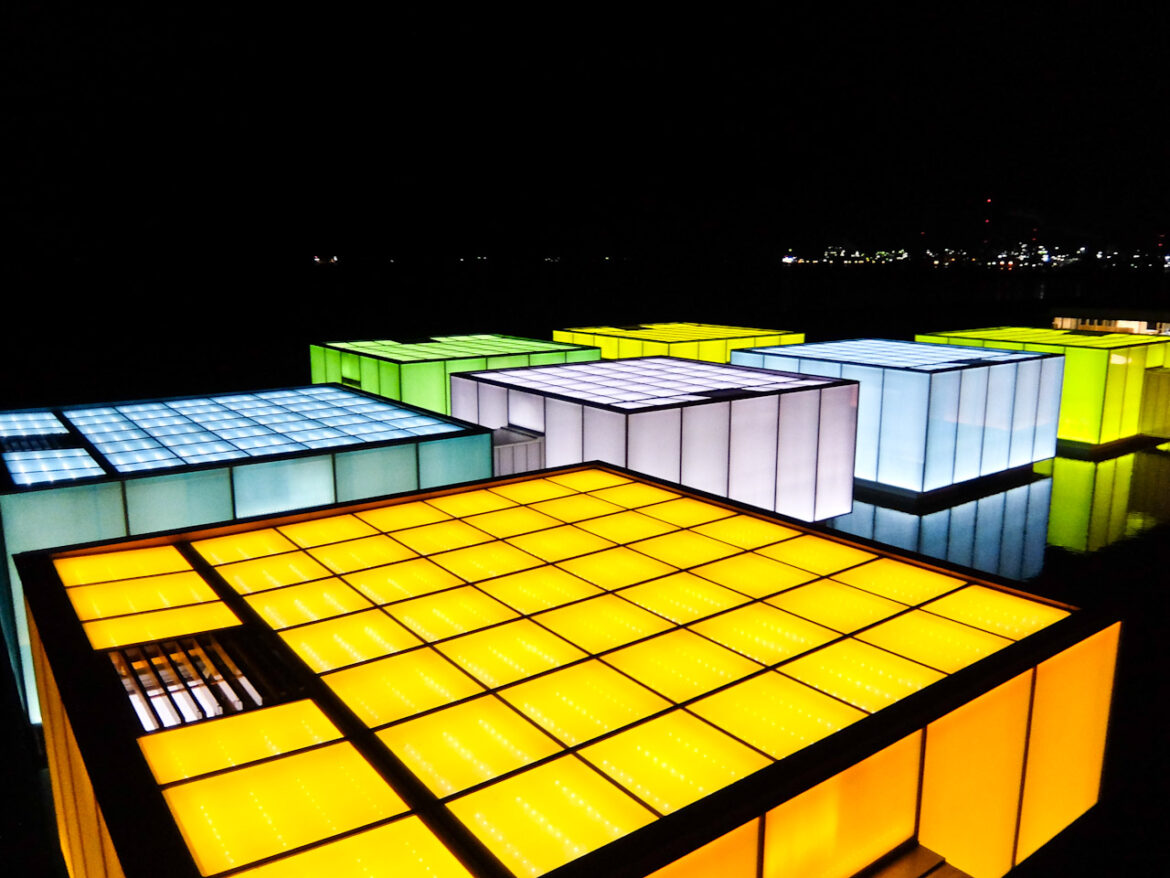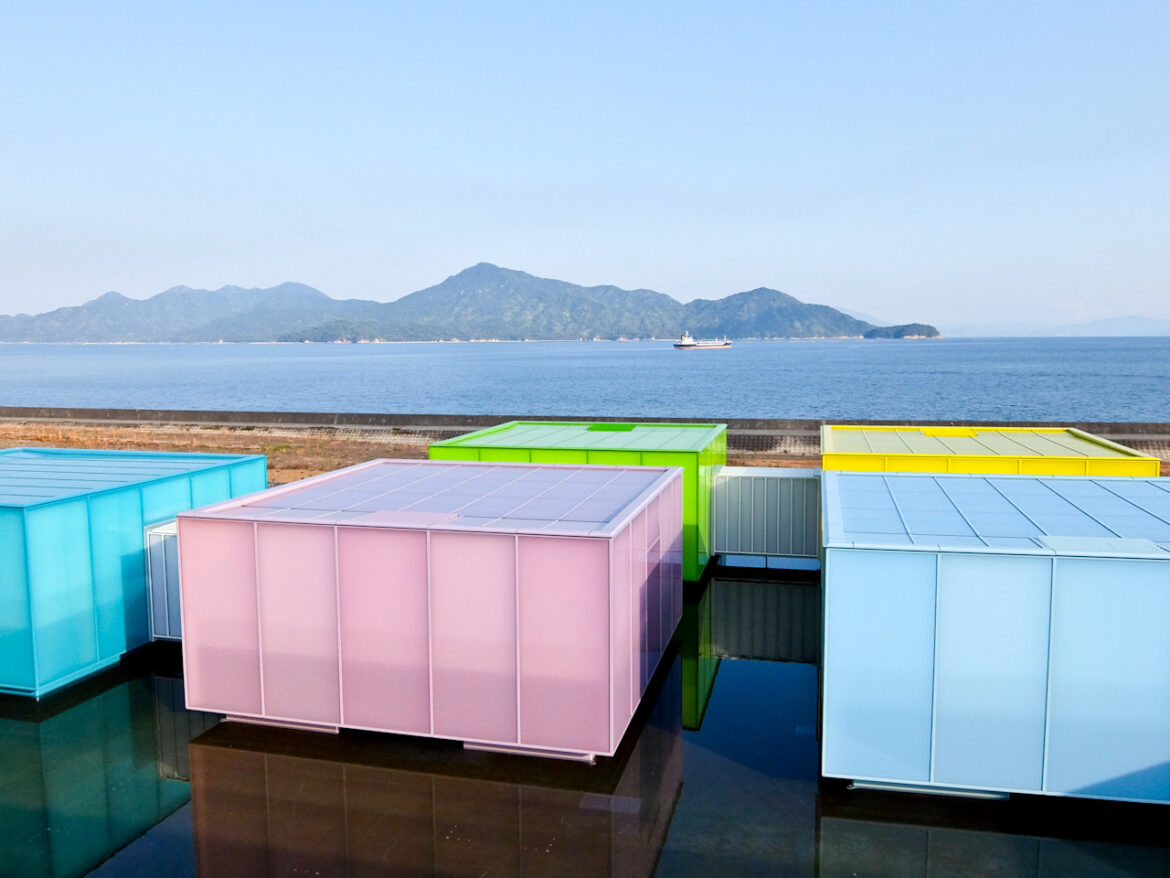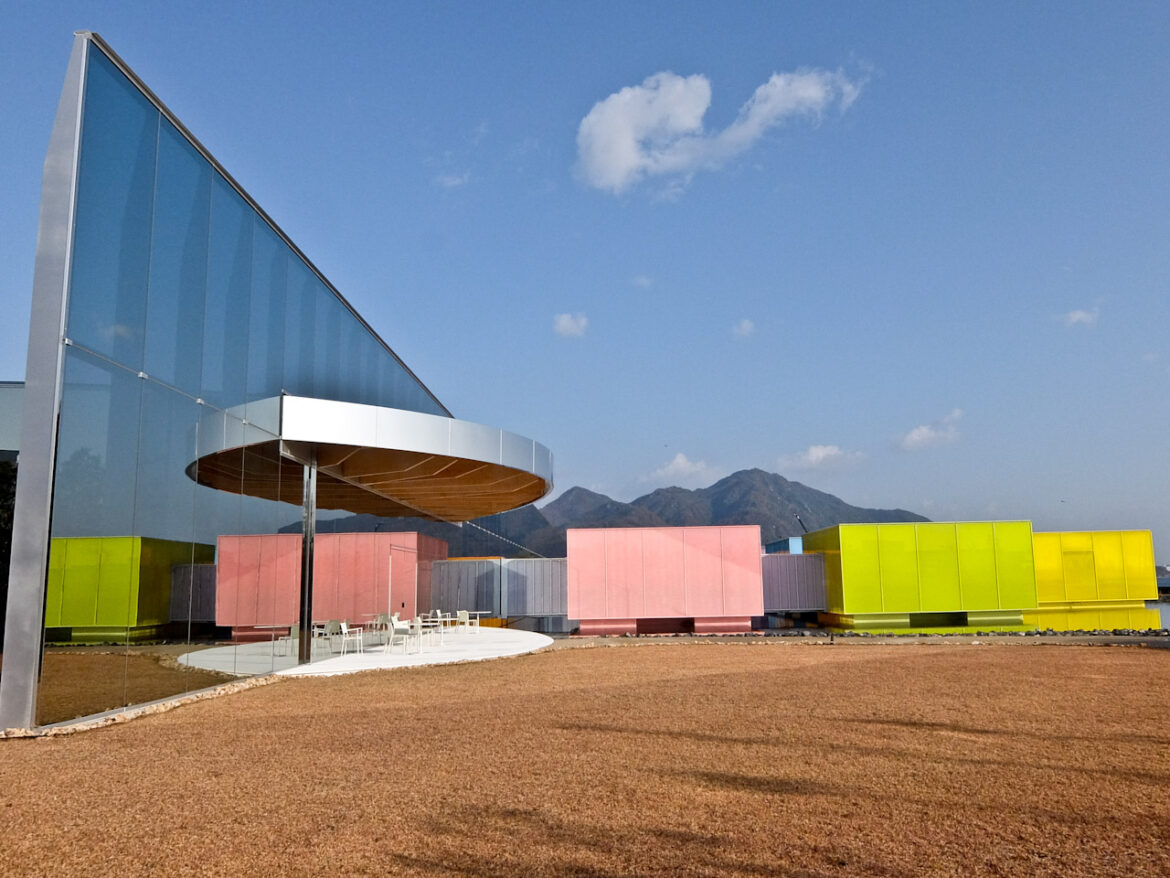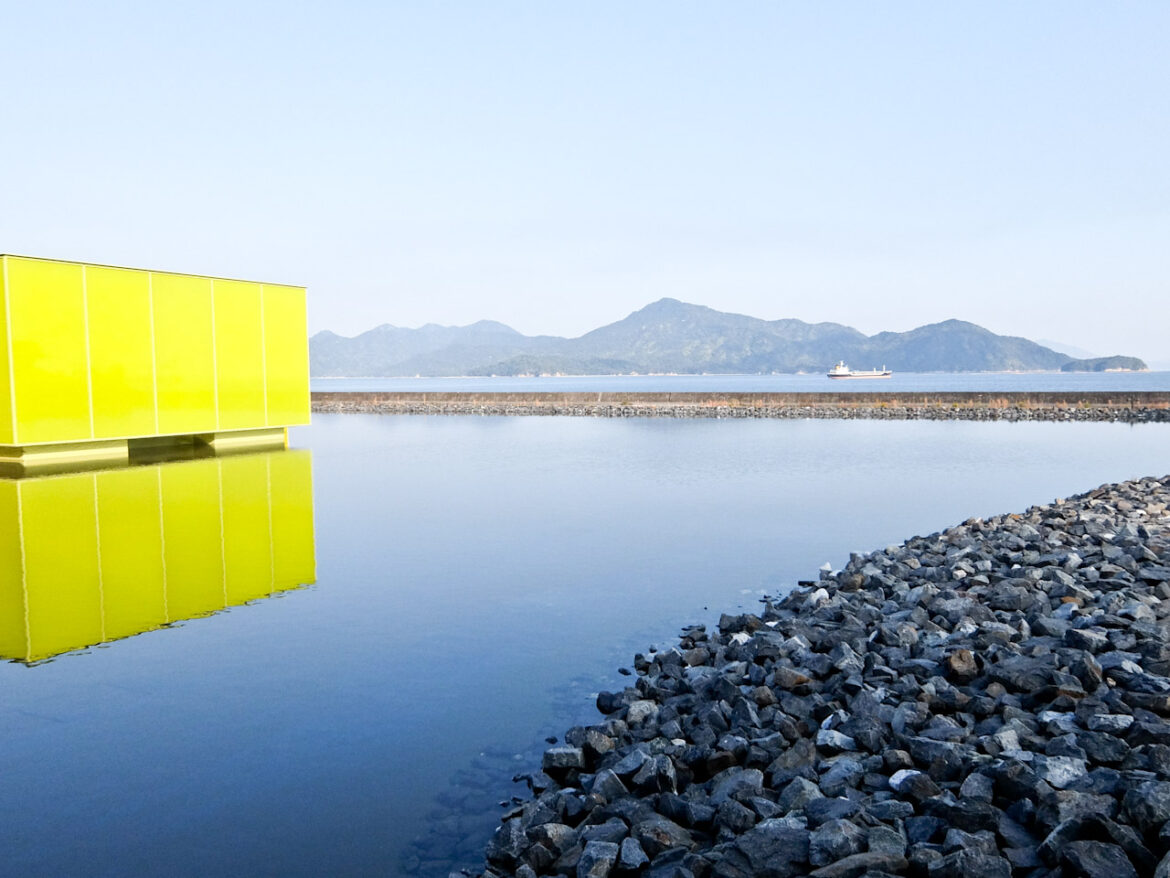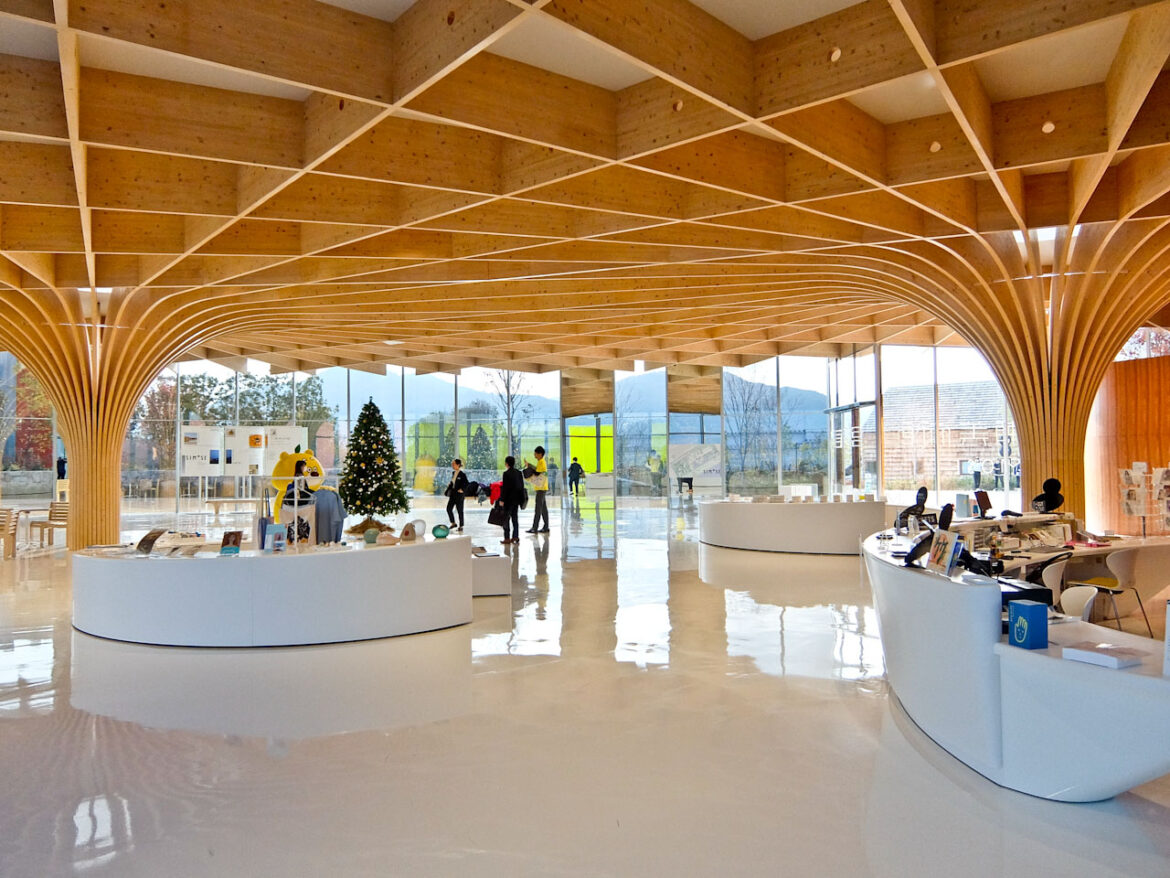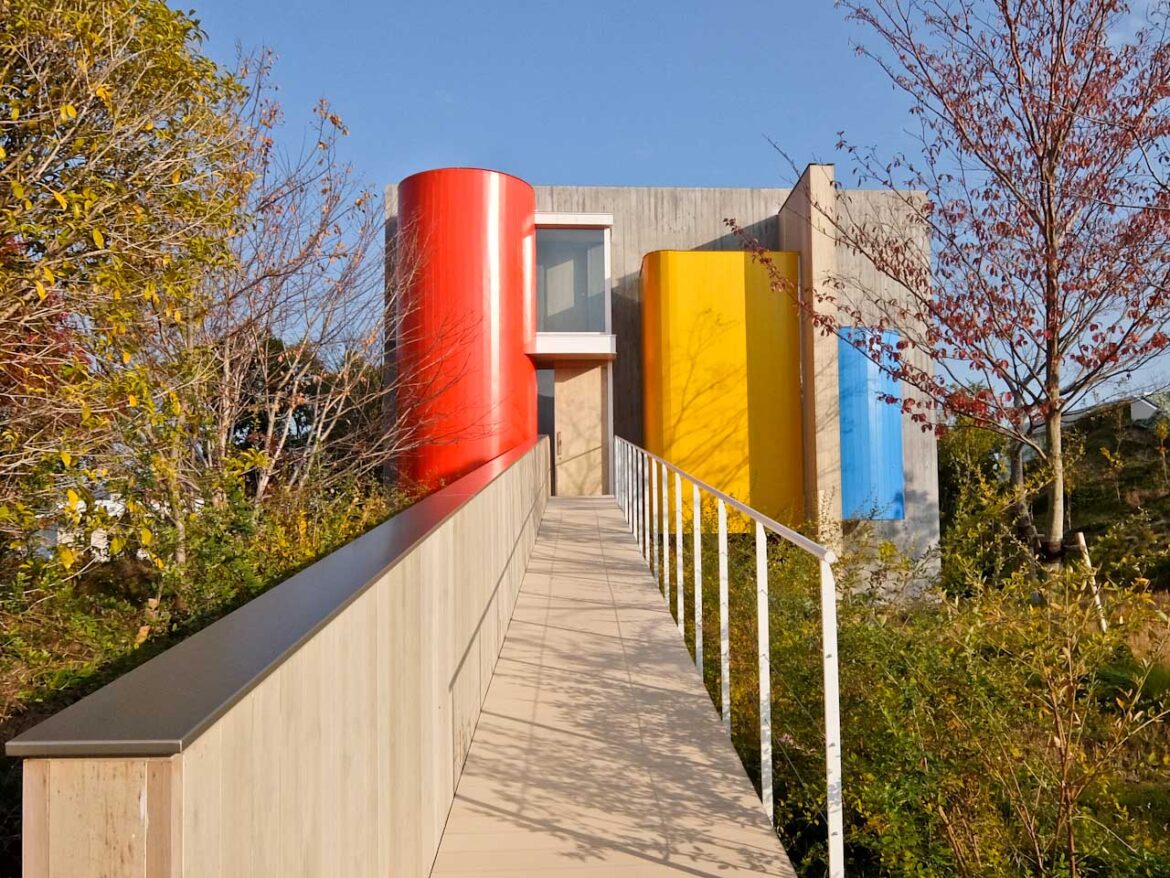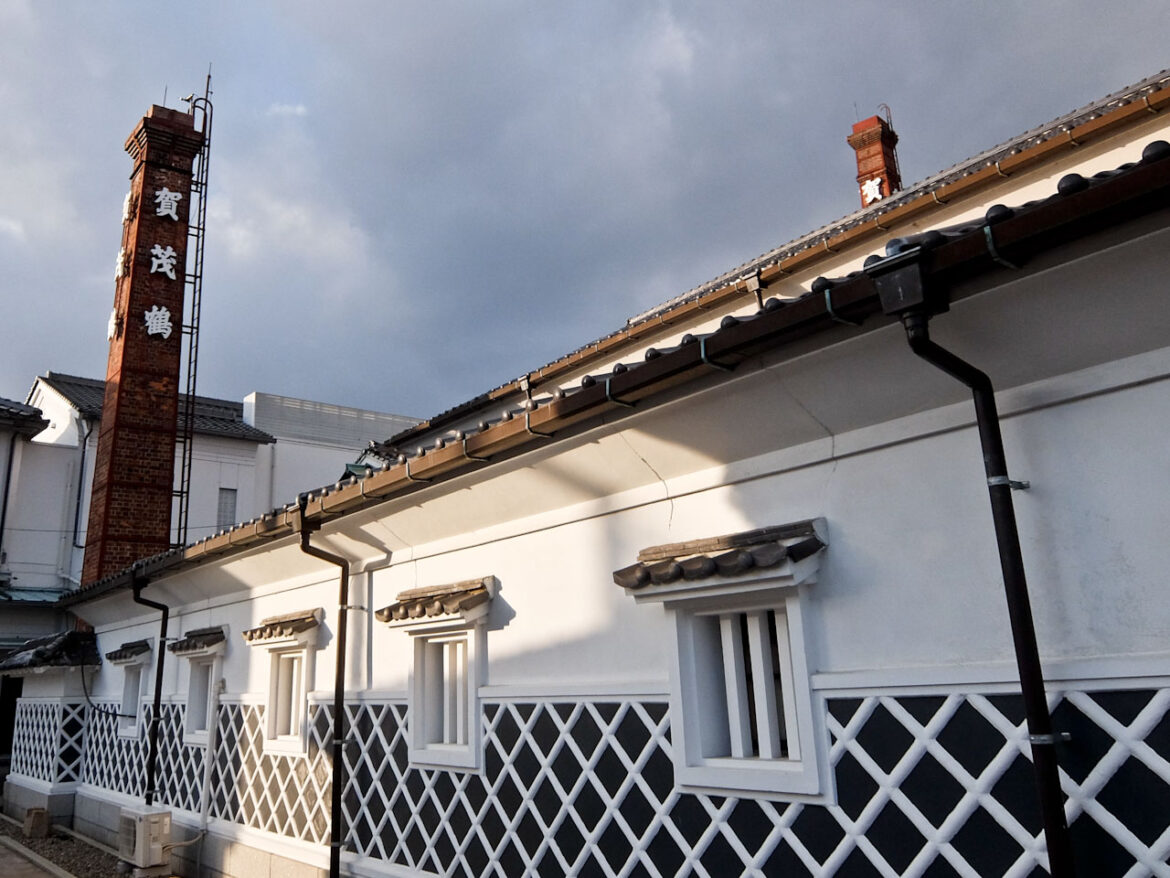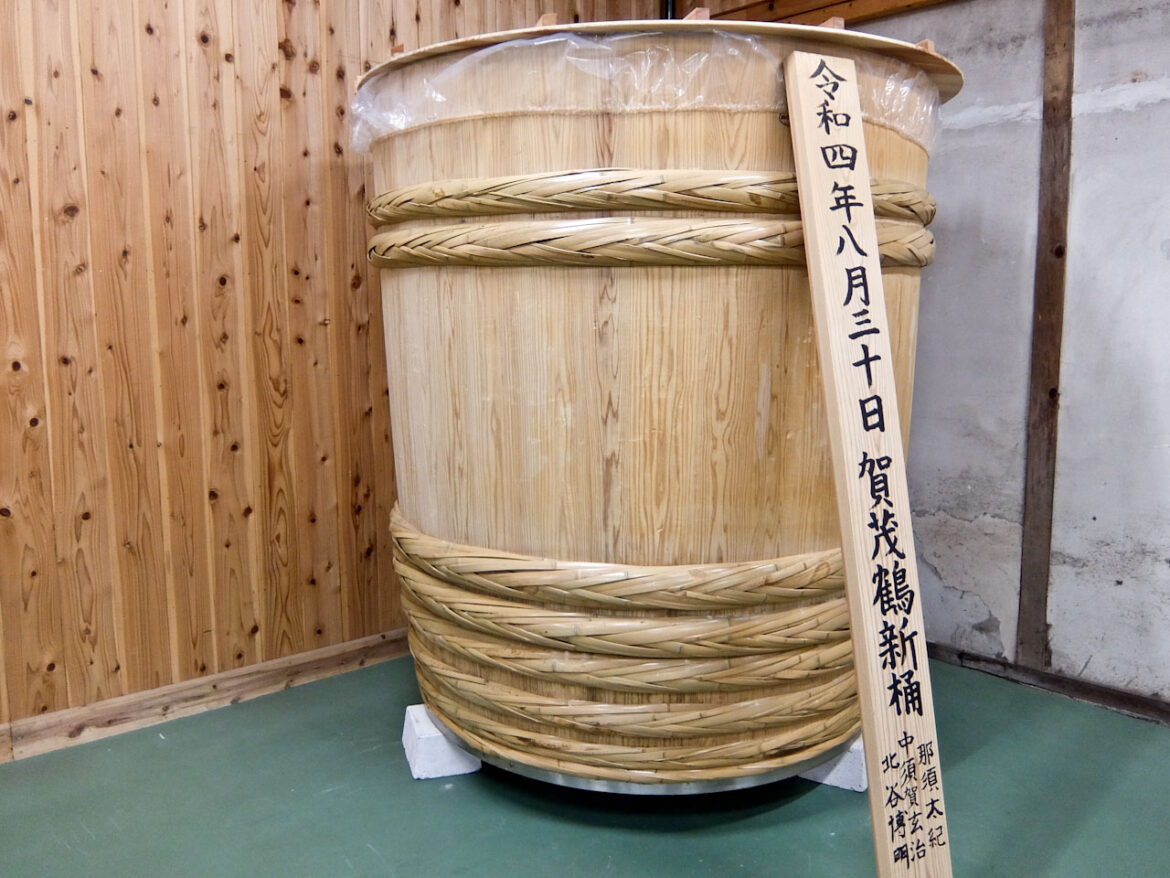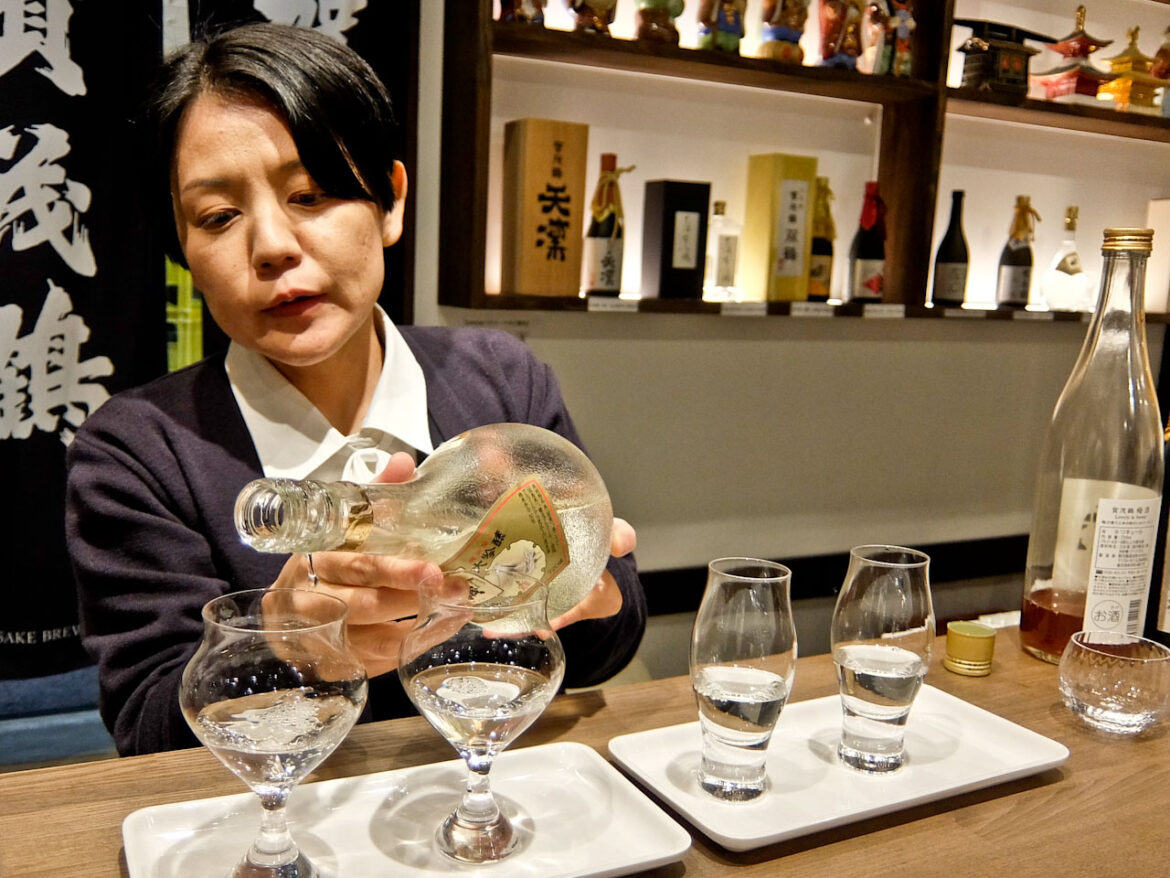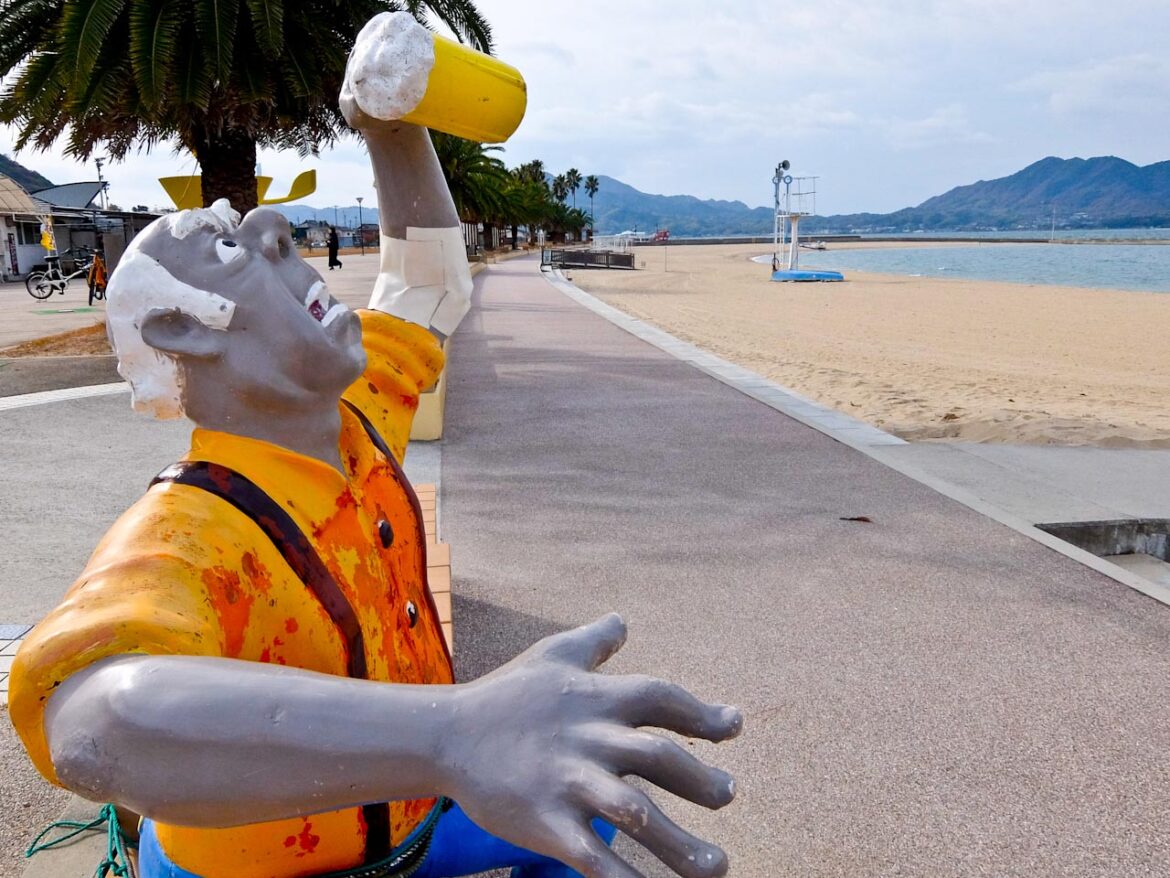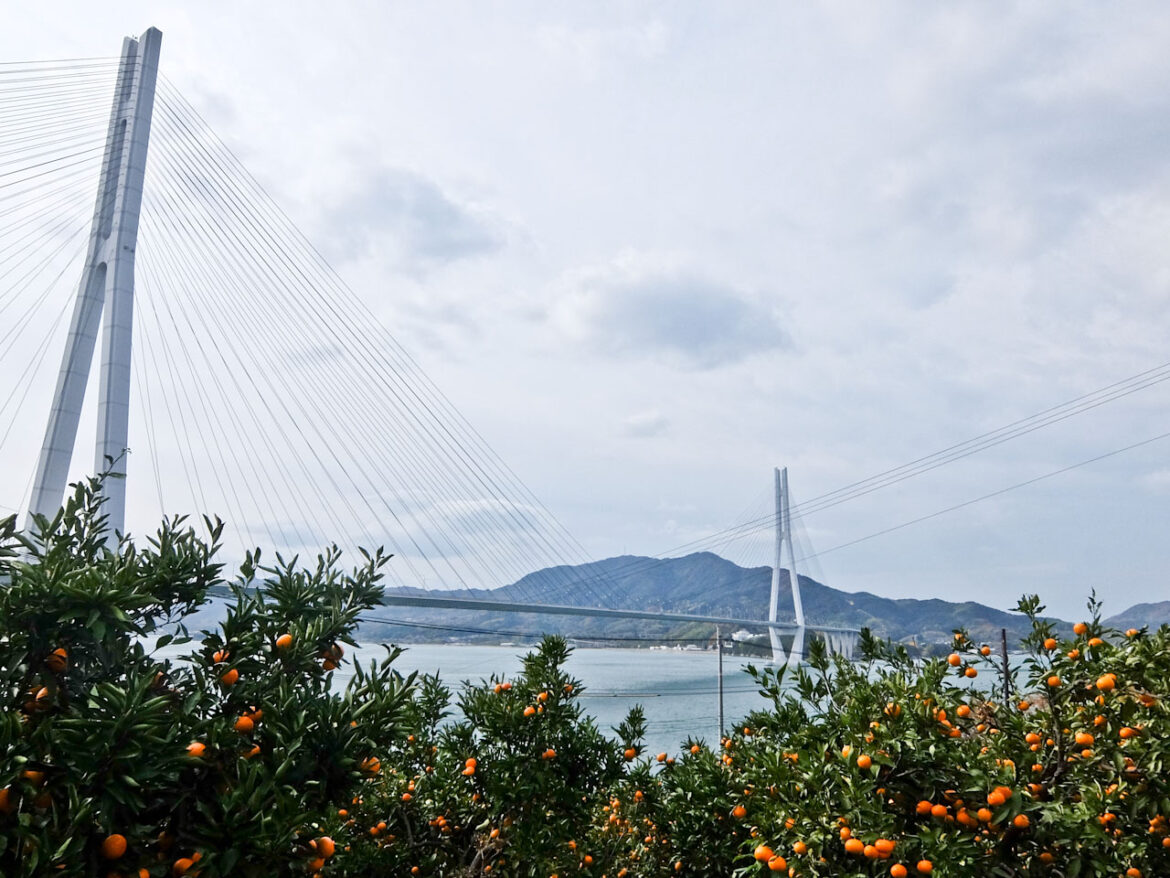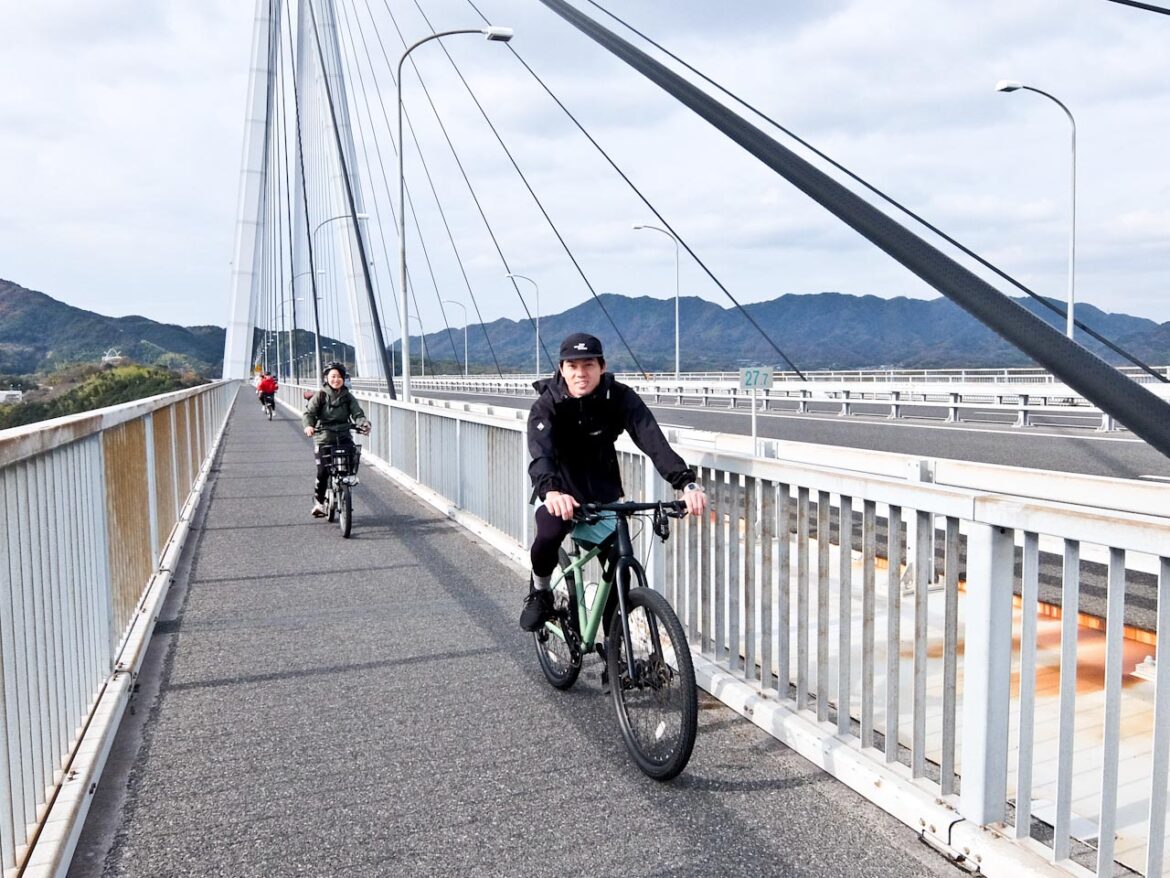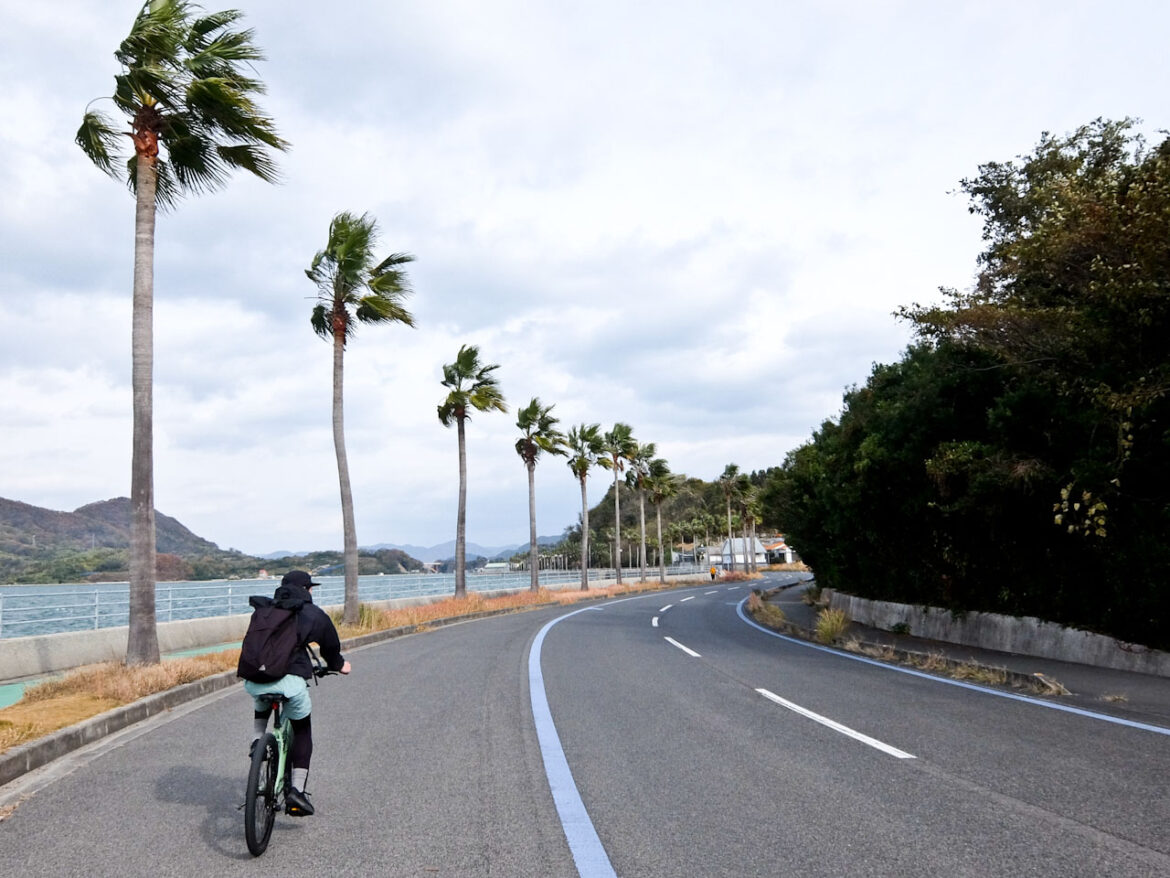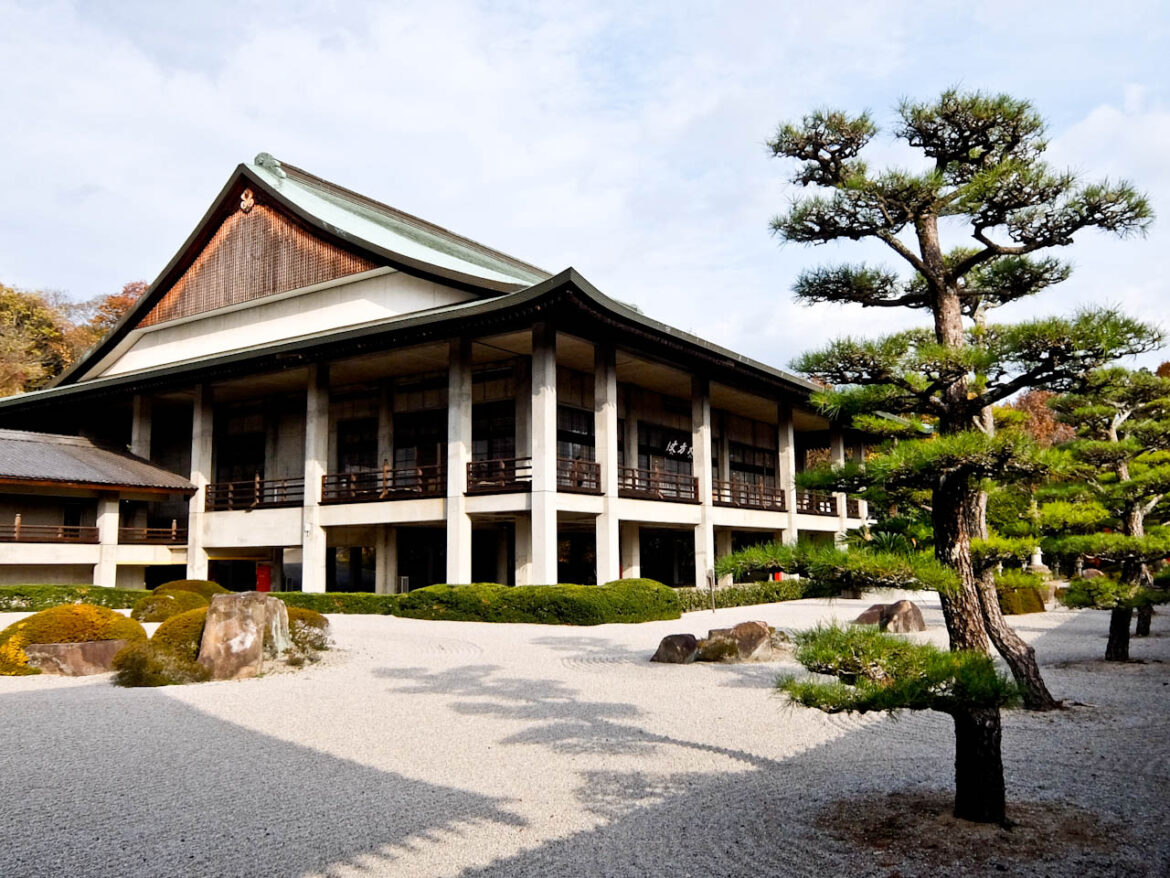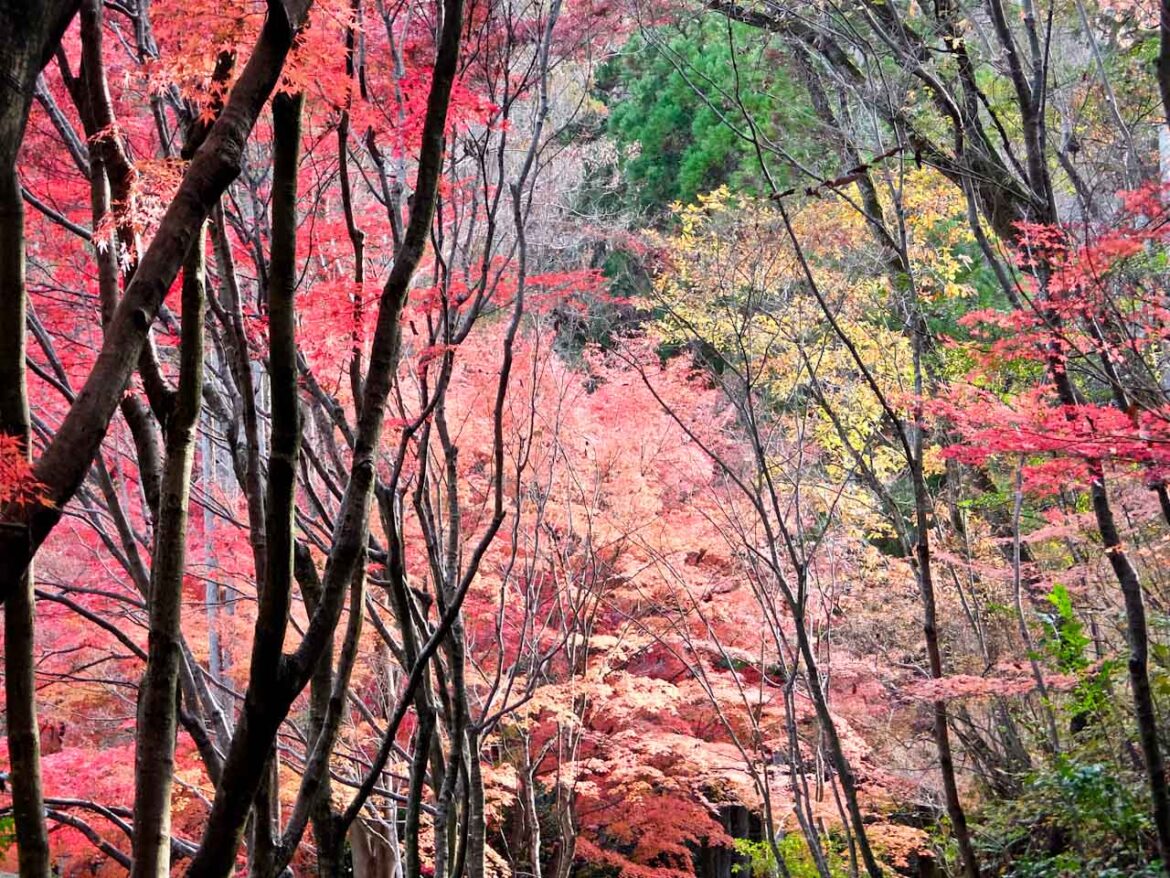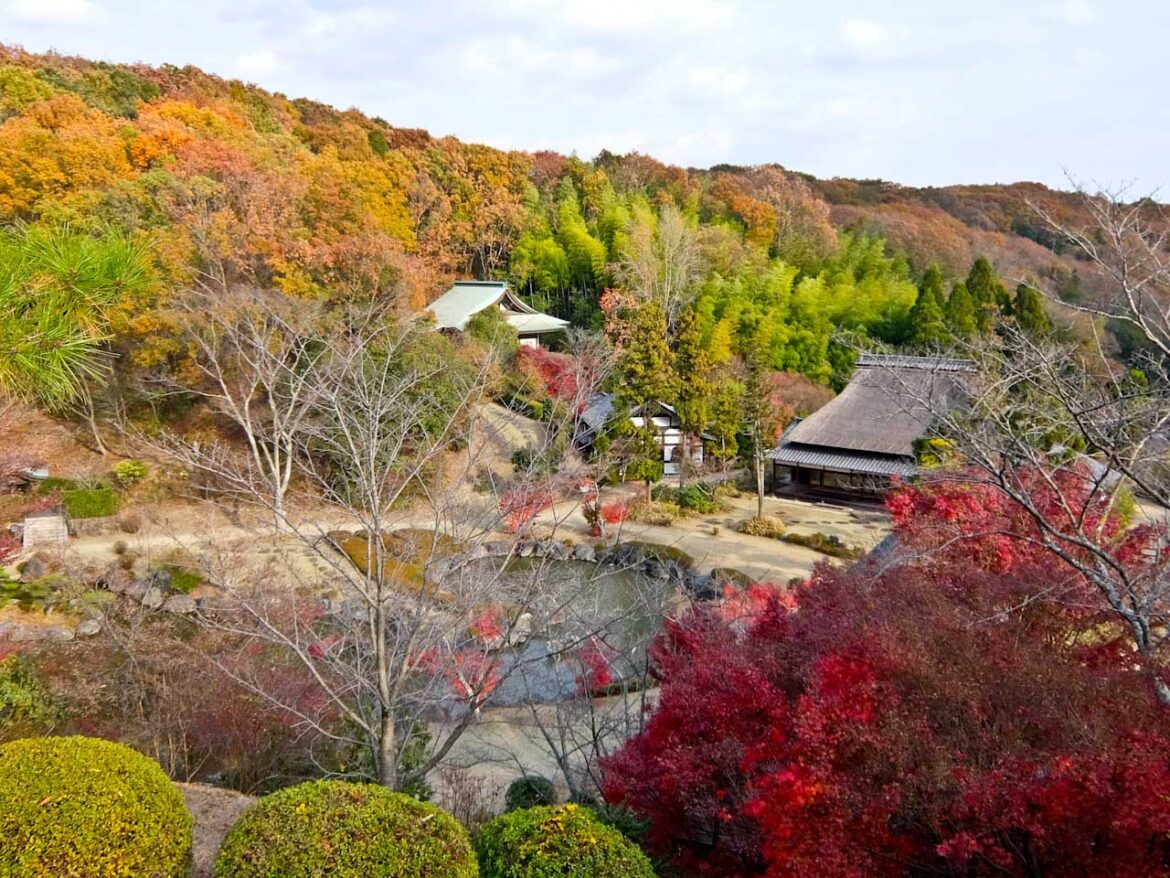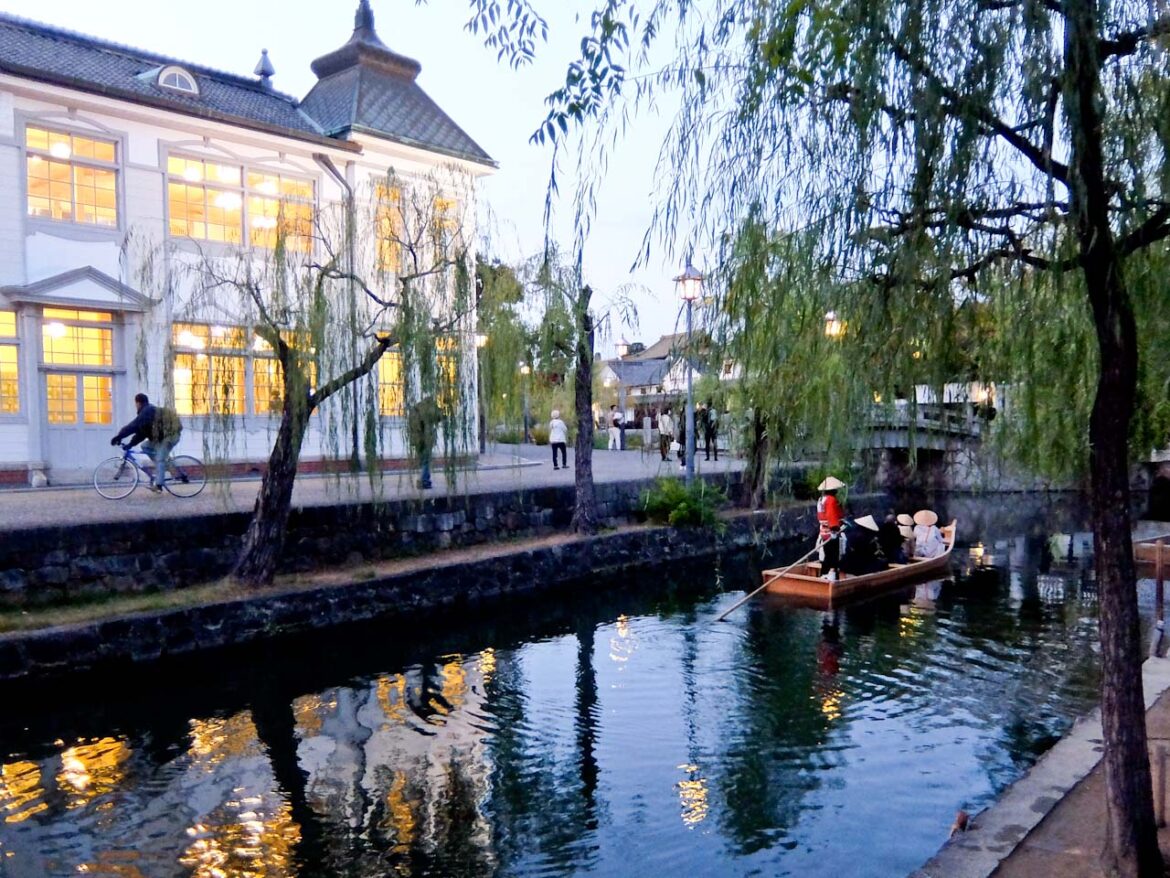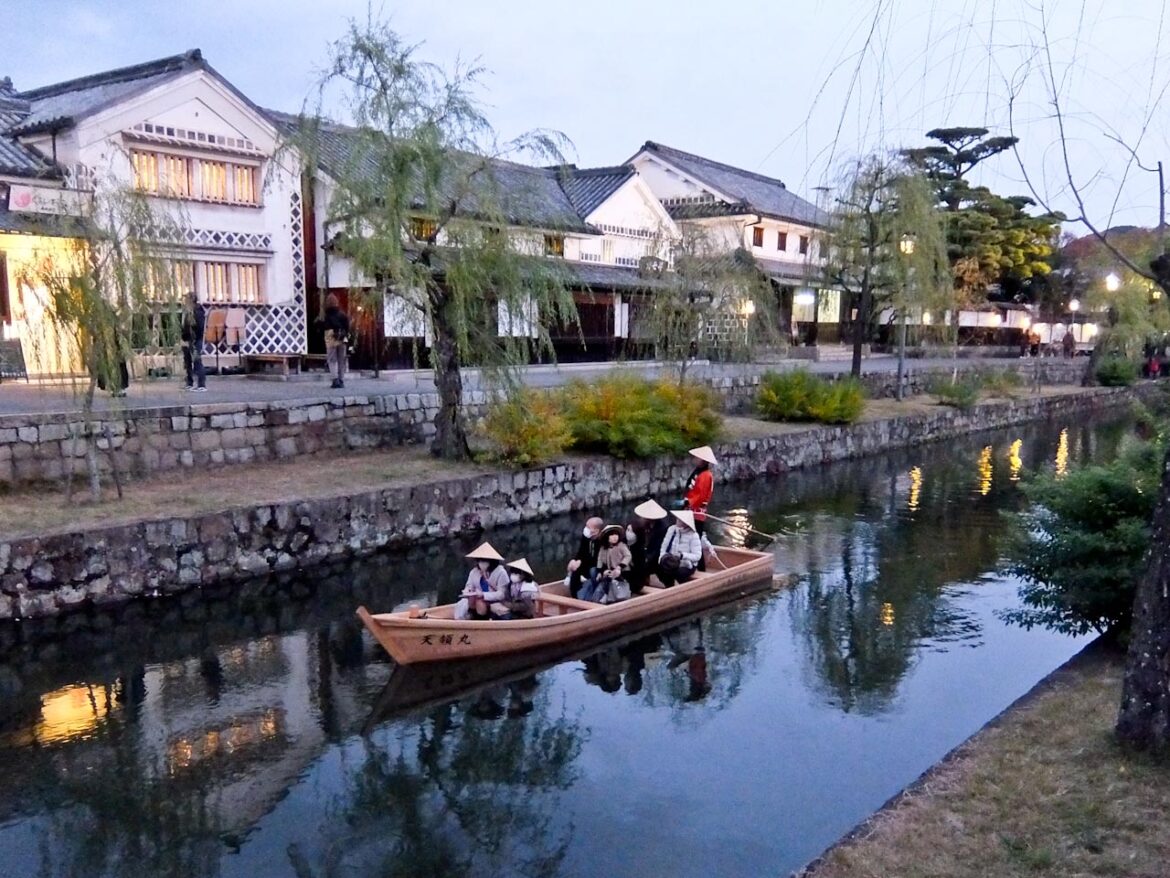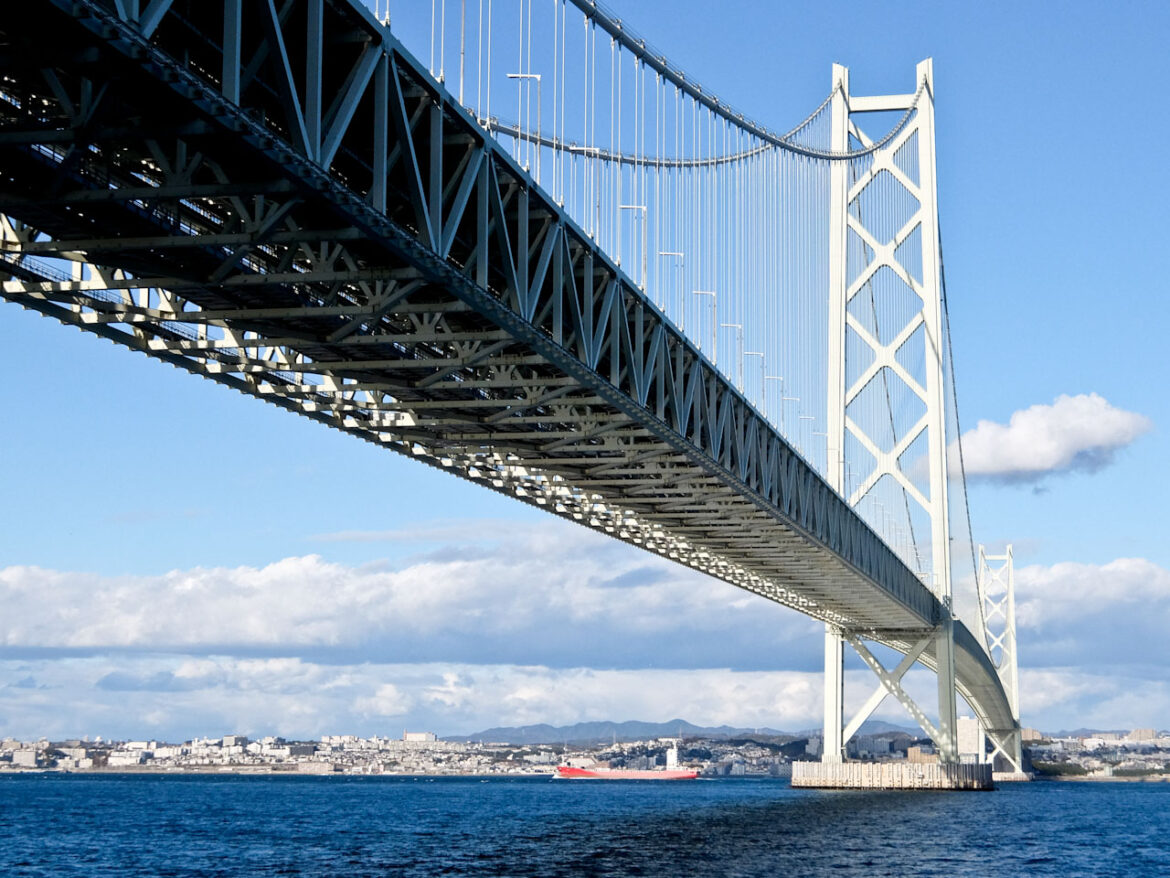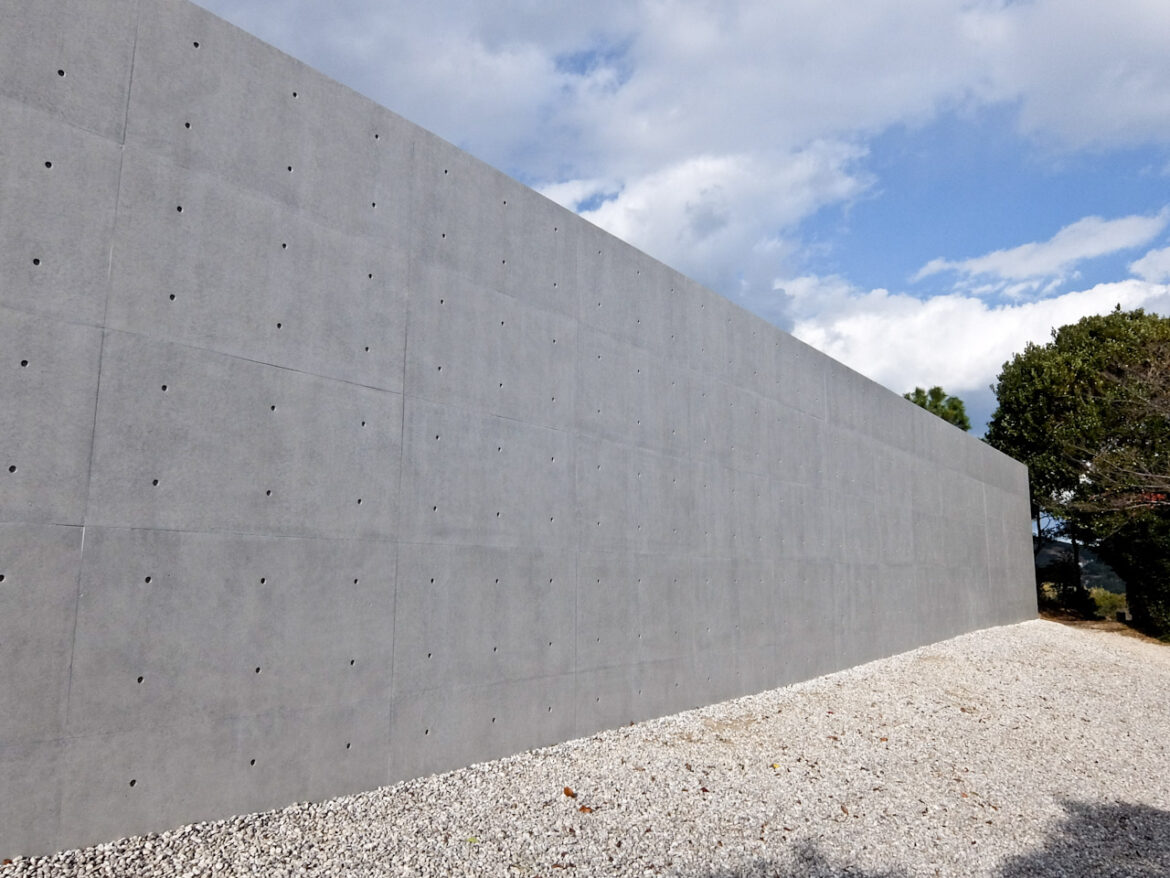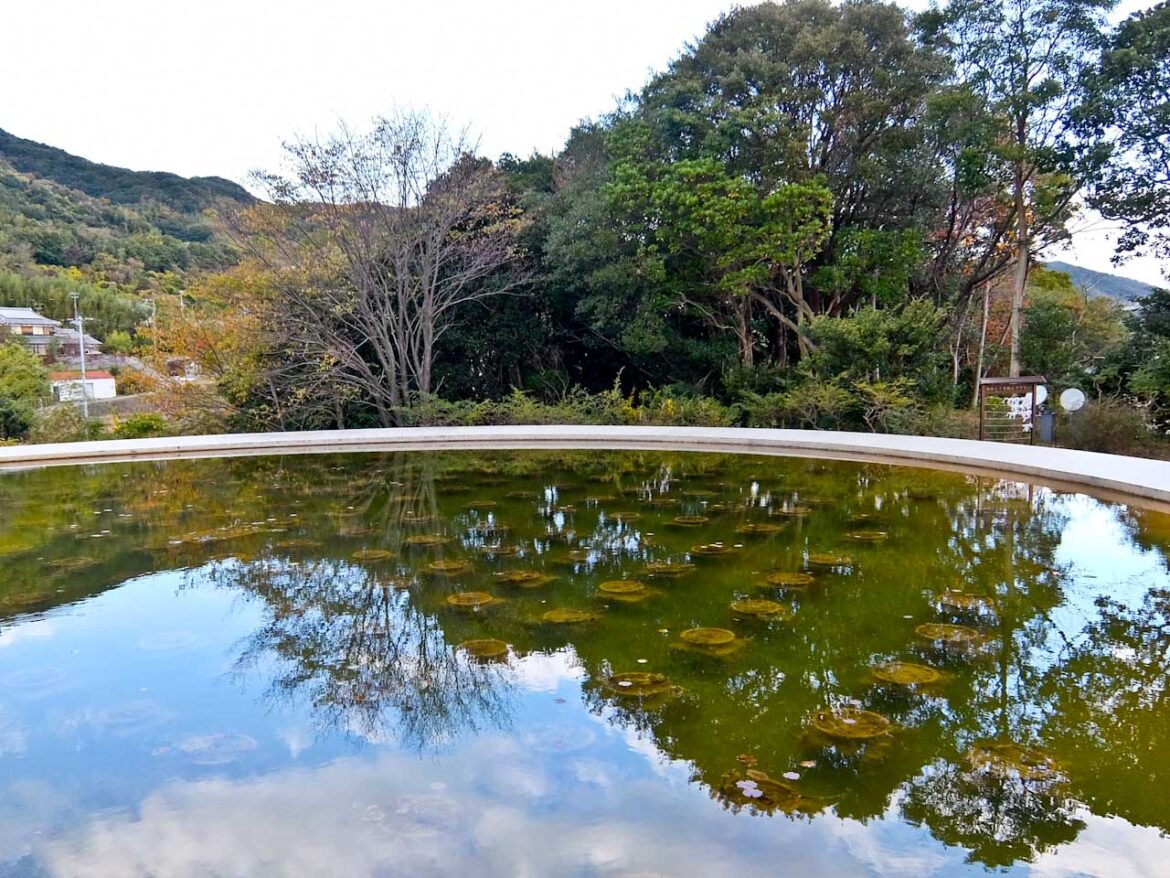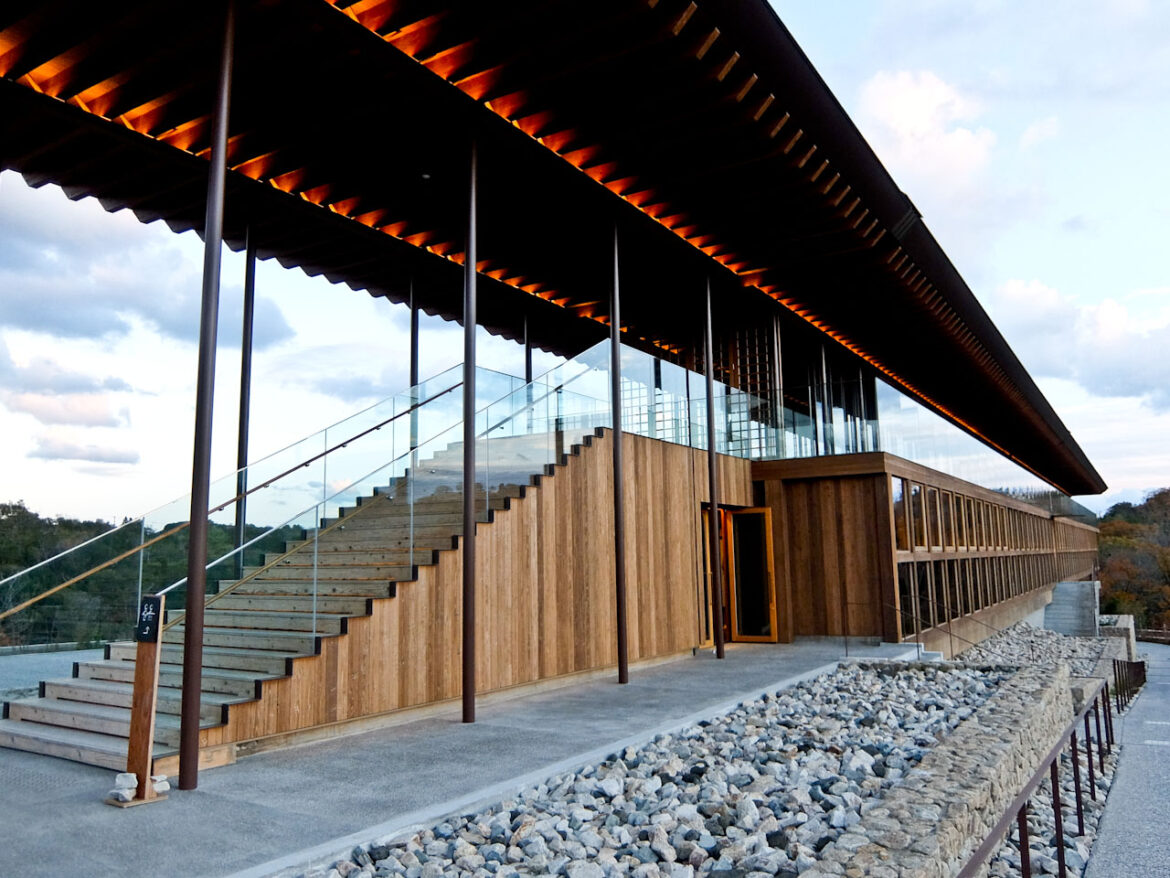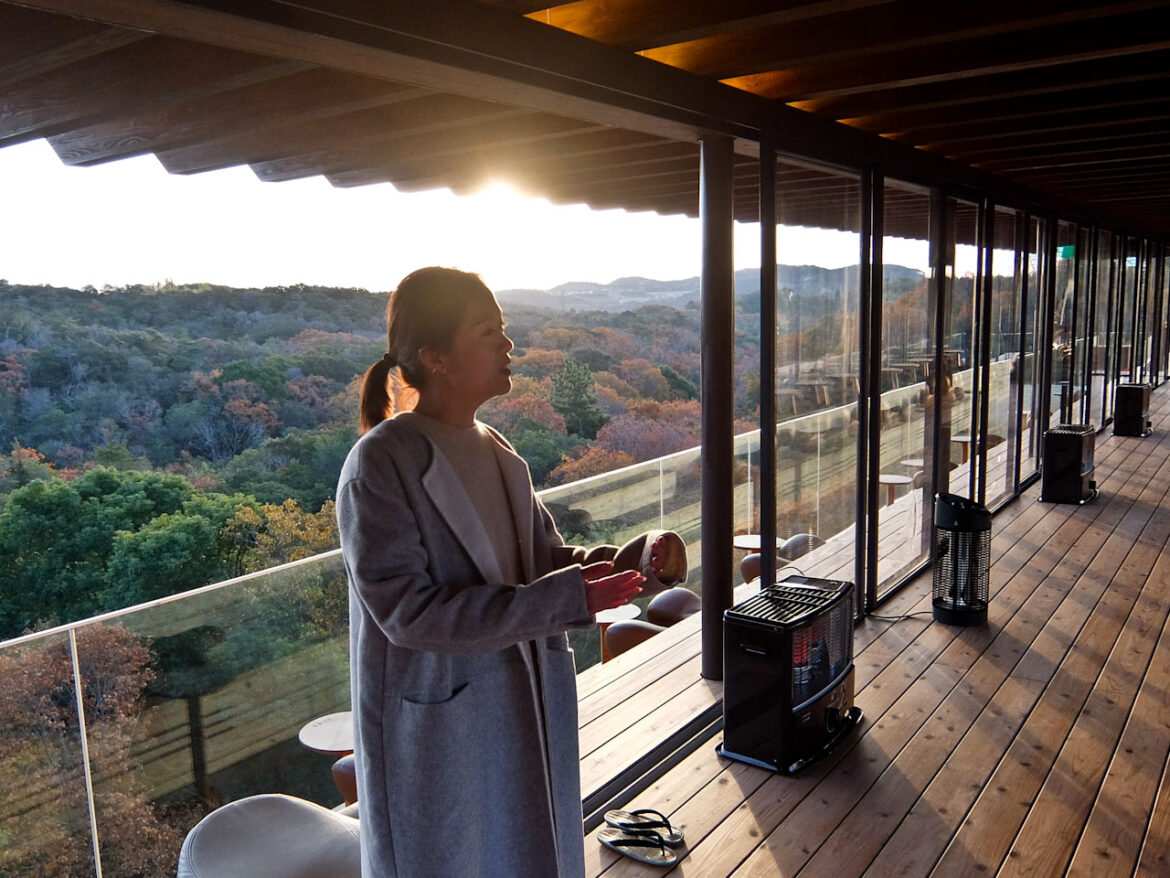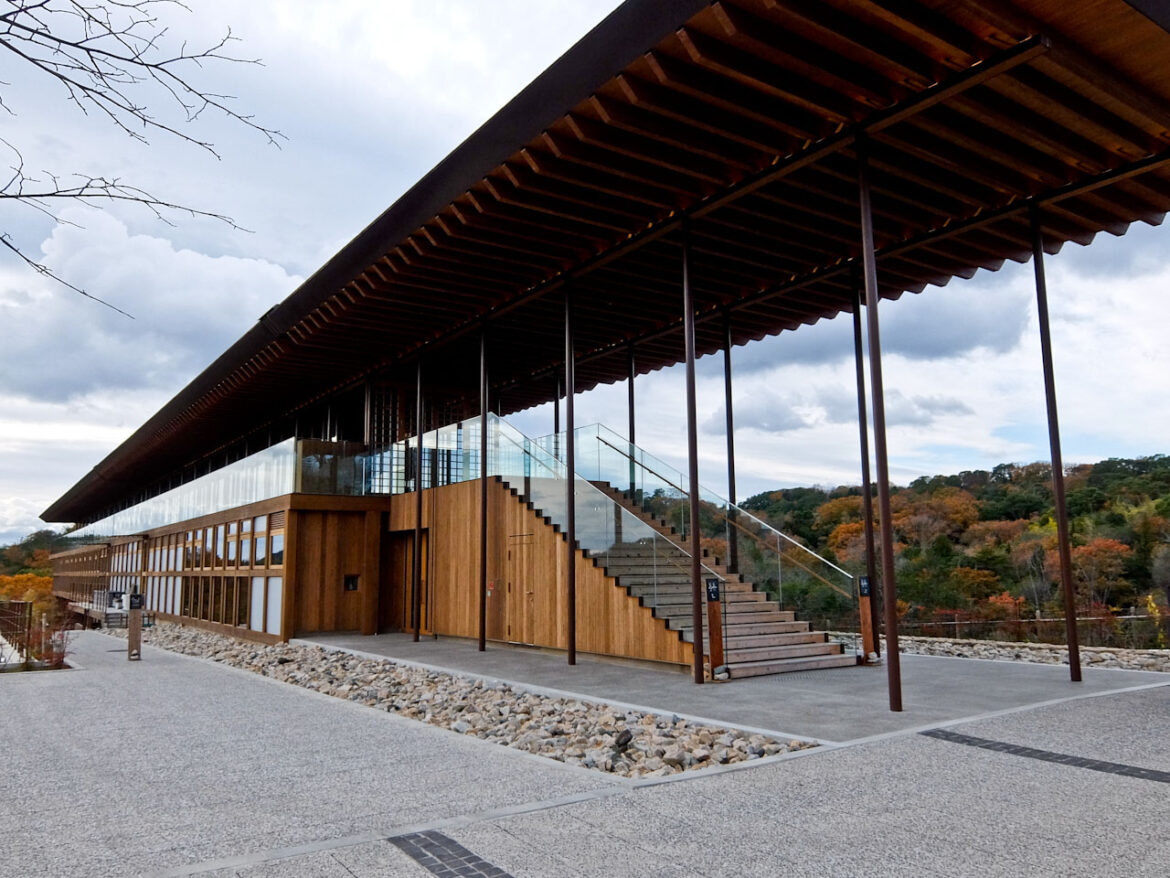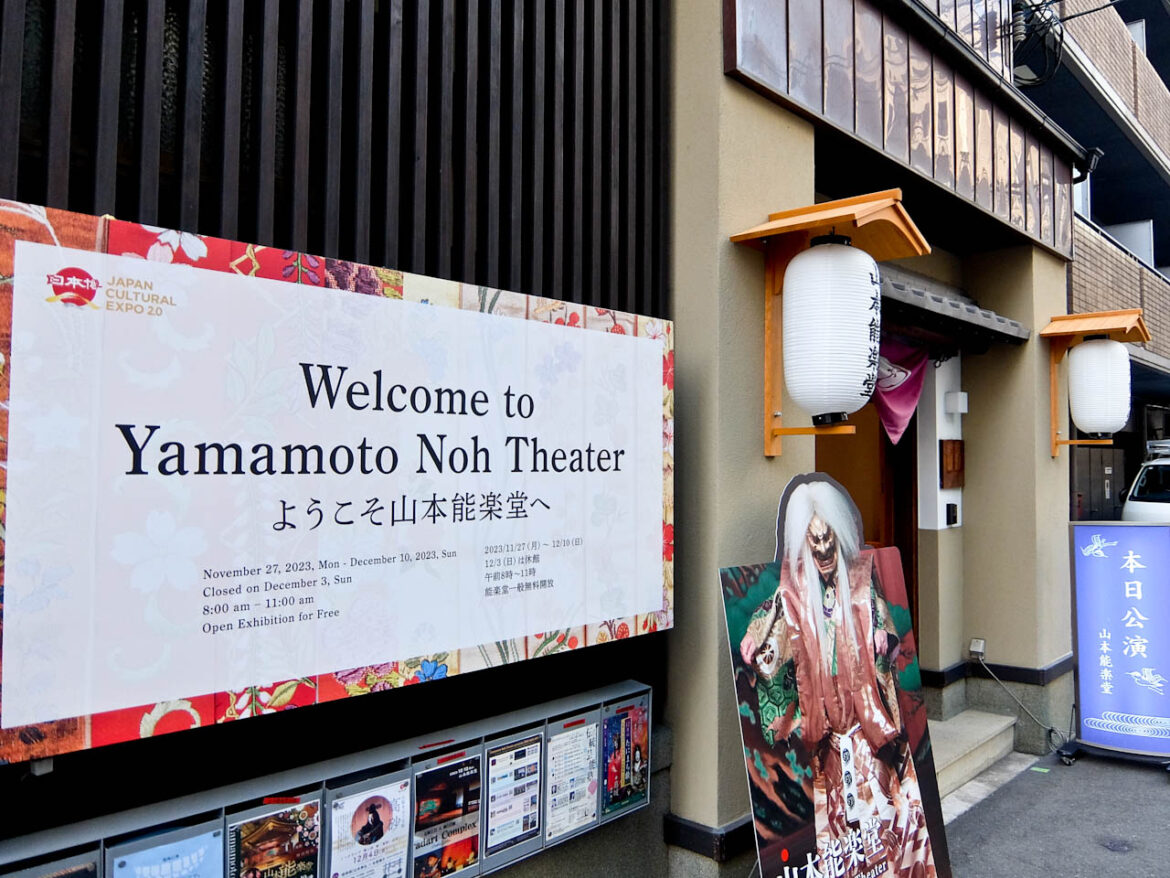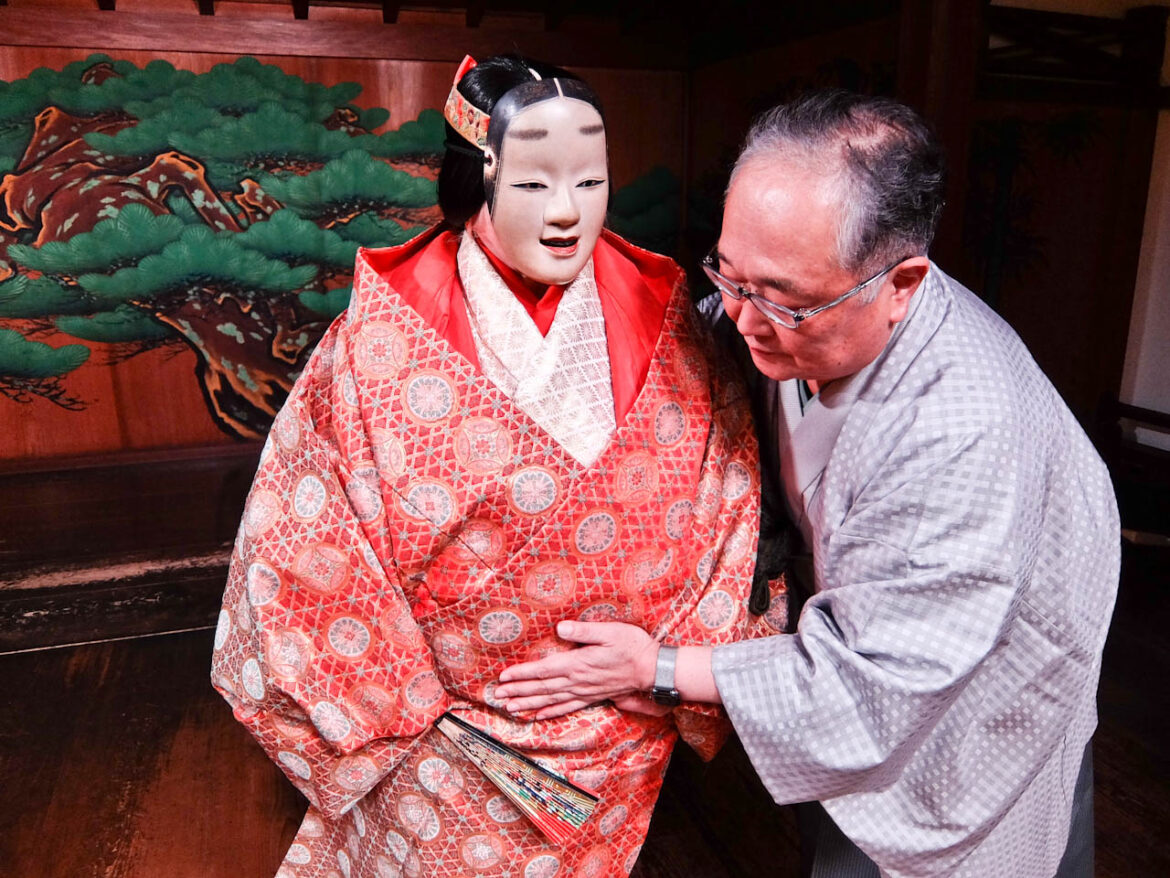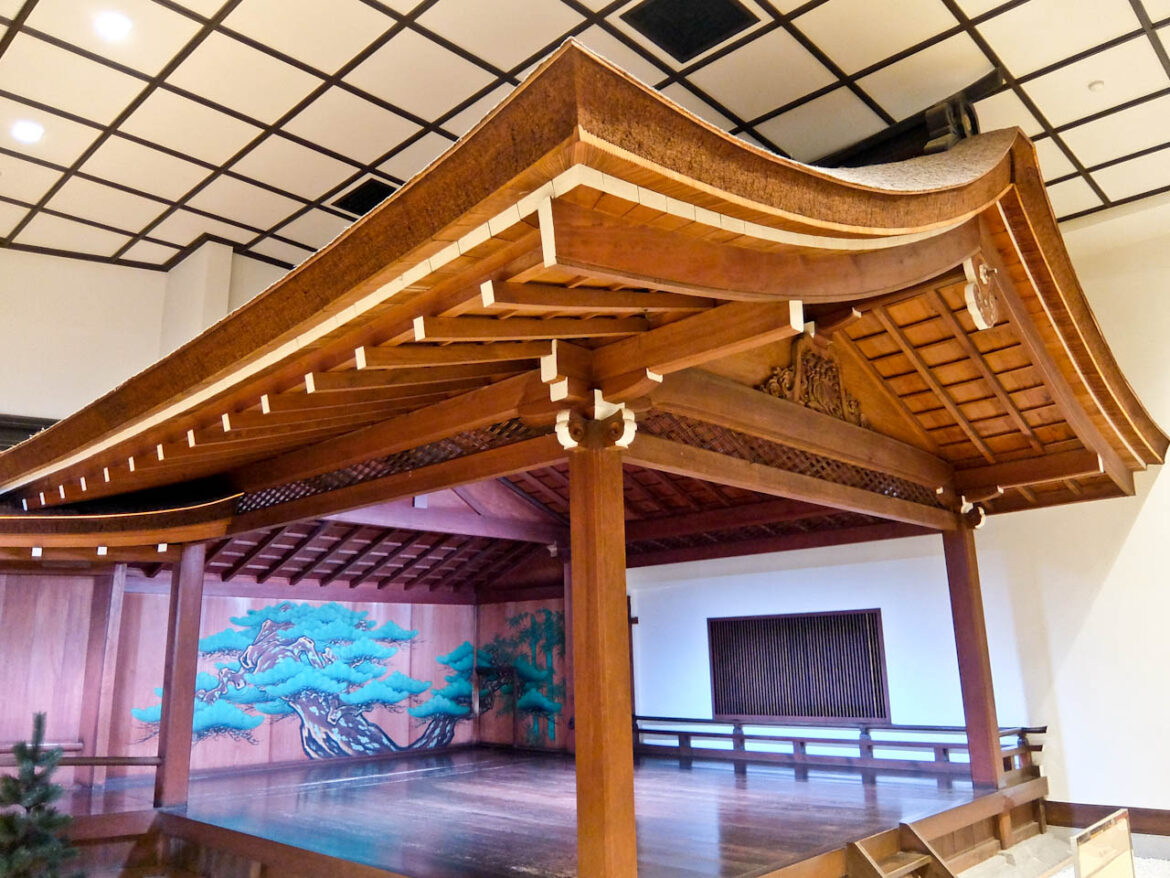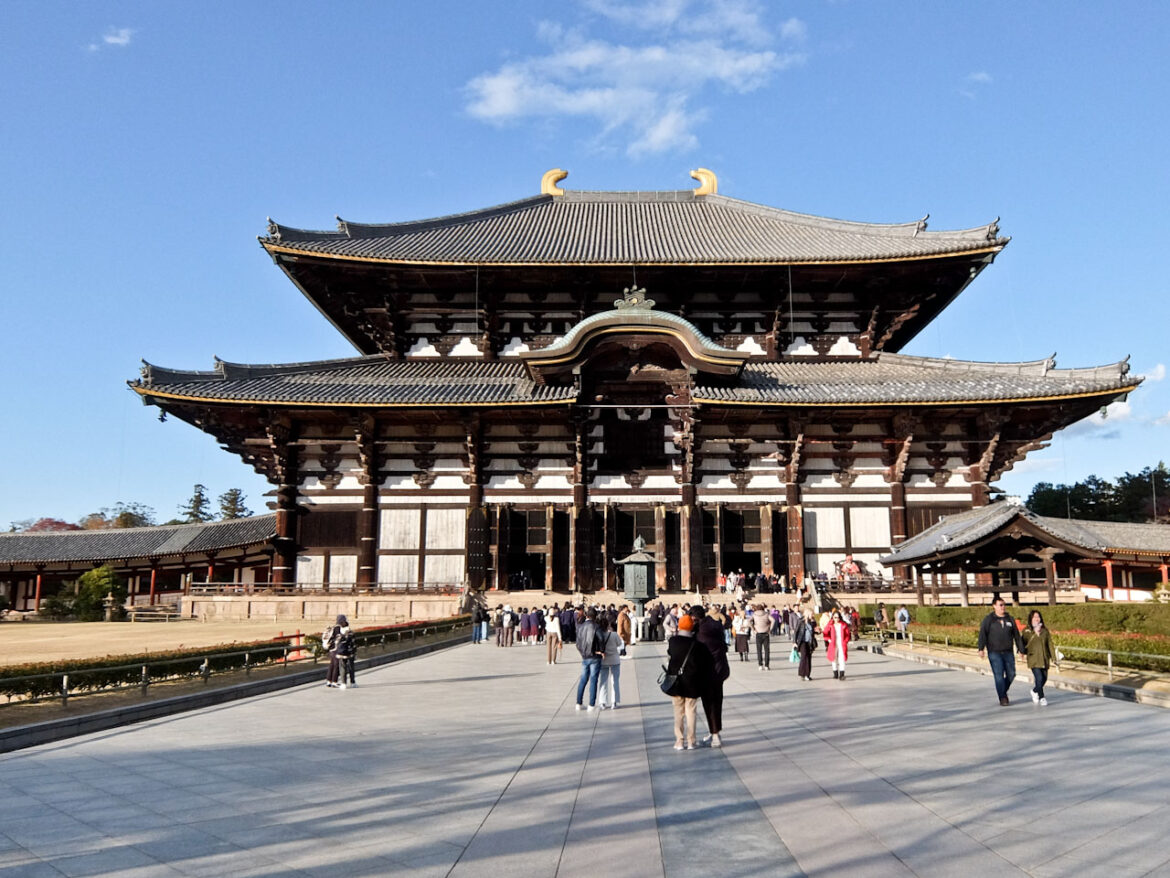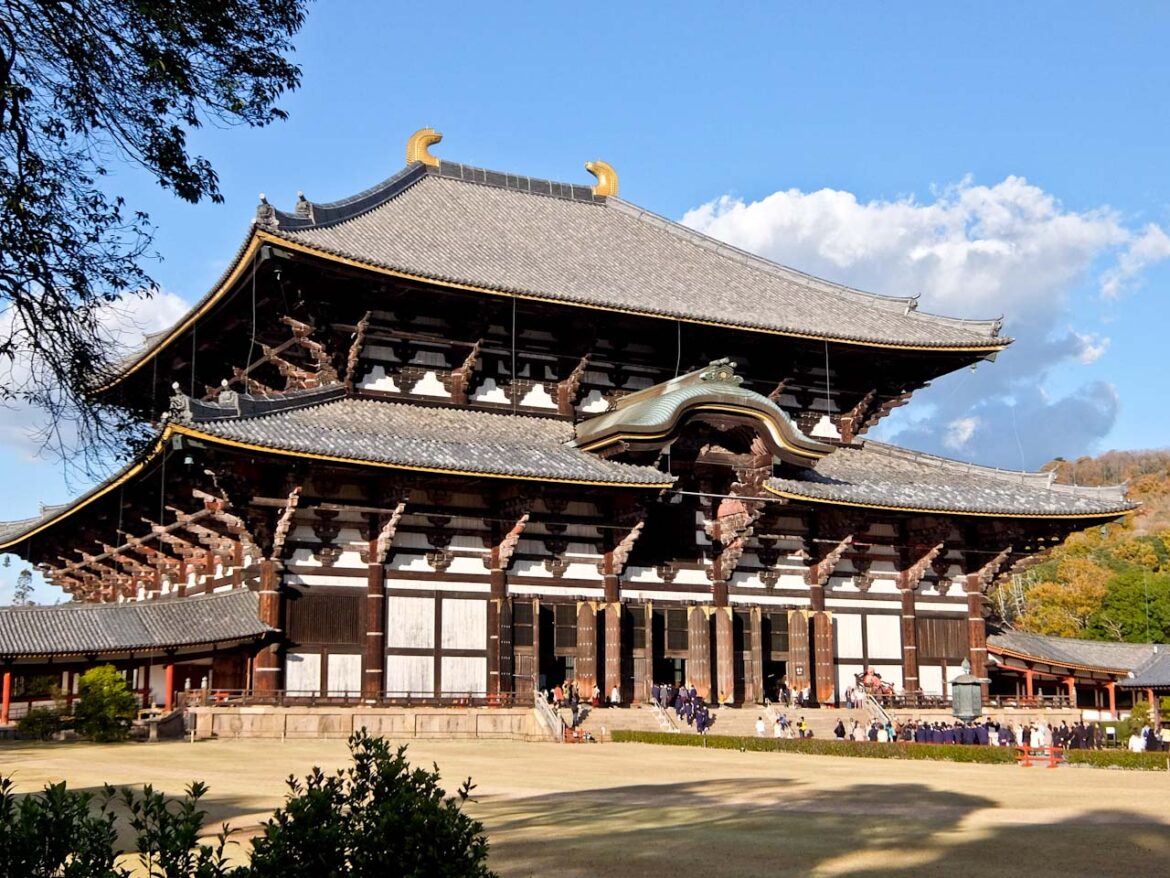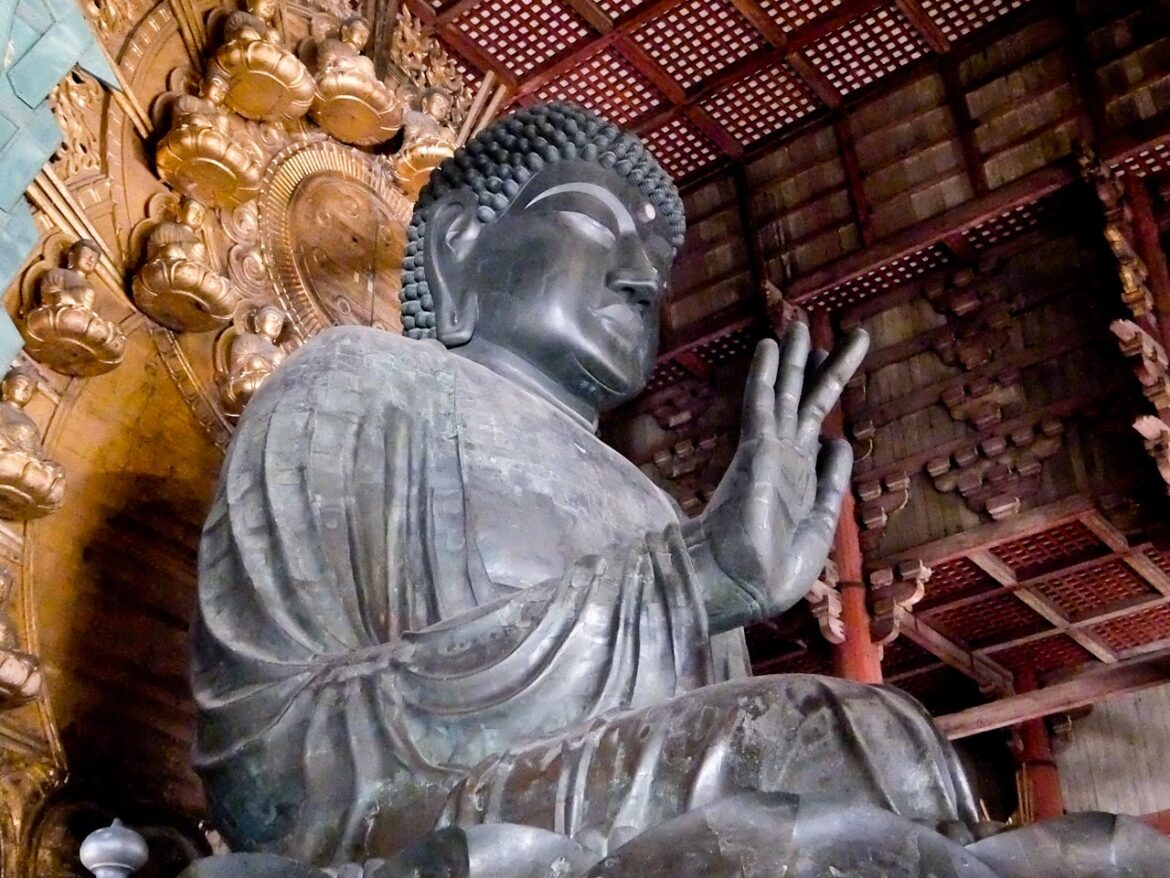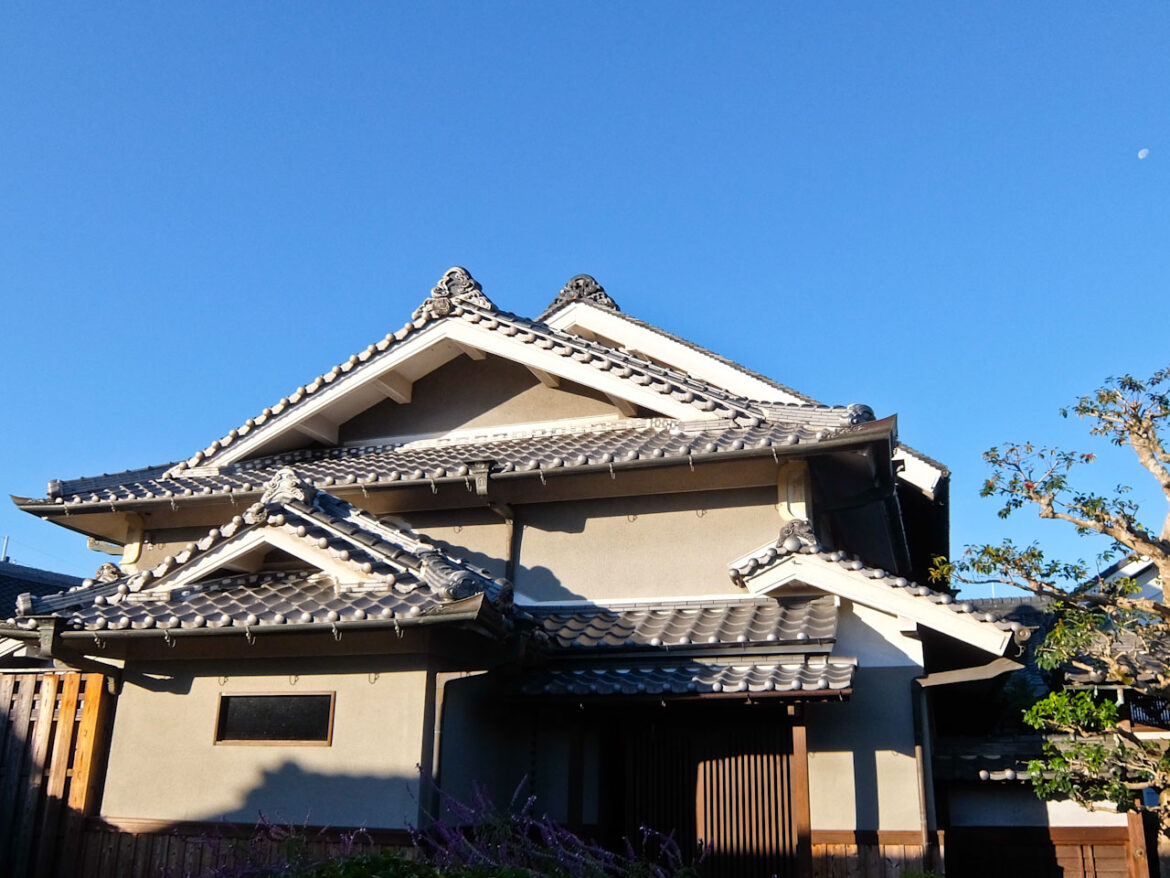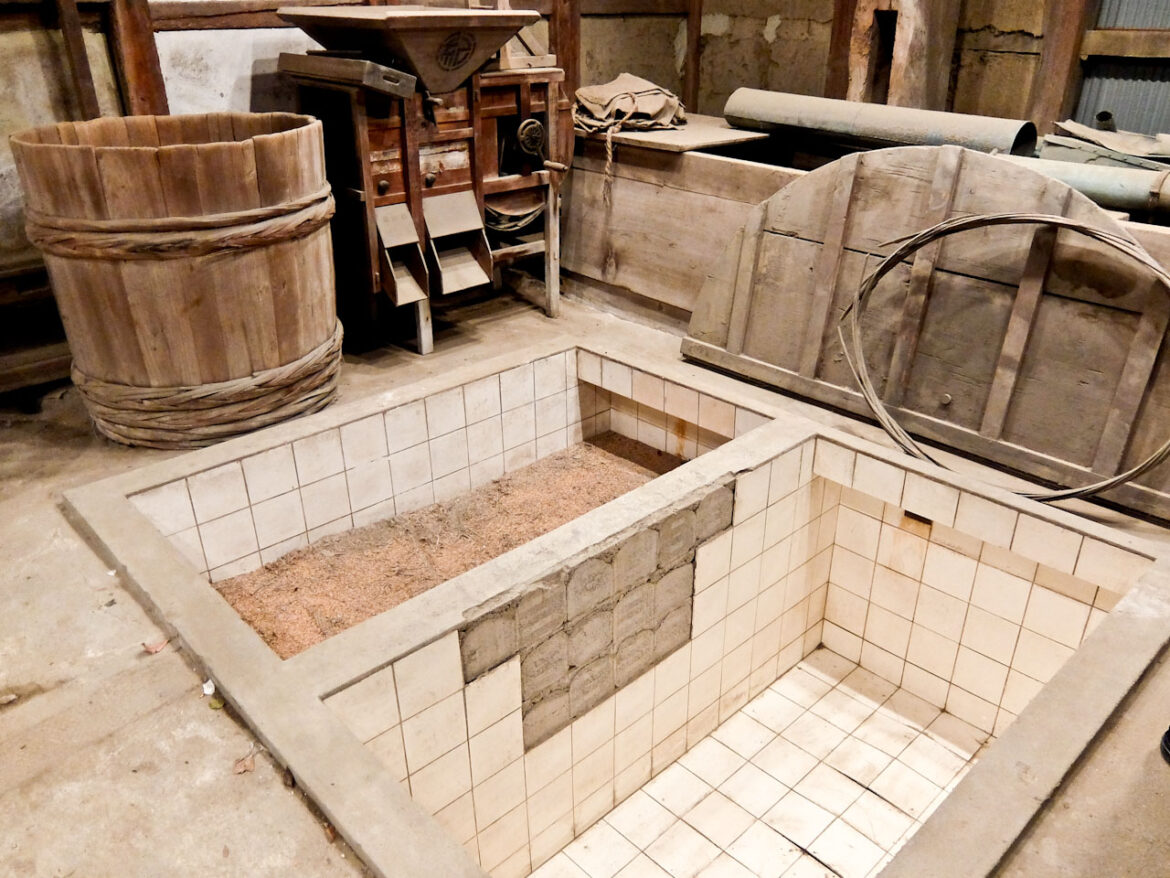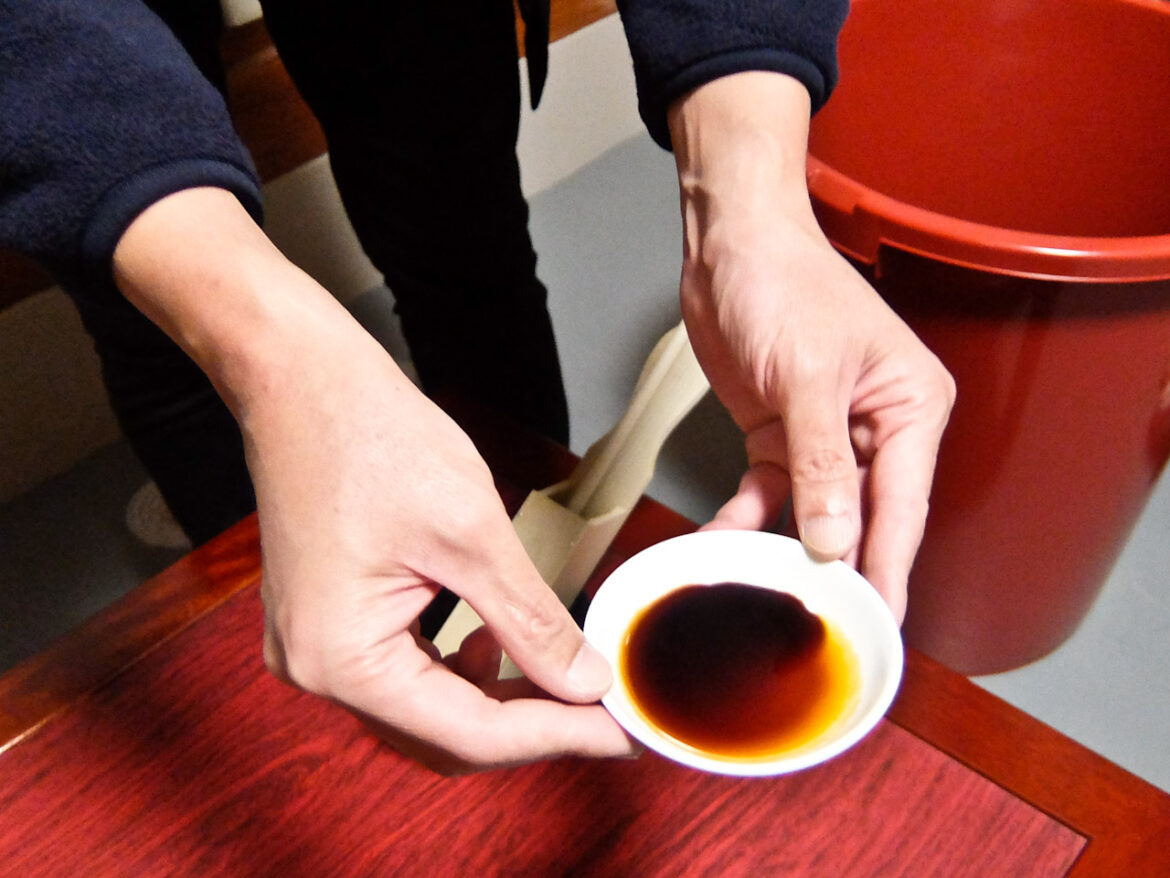In the South West of Japan, sandwiched between Honshu, Shikoku, and Kyushu lies the Seto Inland Sea, dotted with over 350 islands, a region known as Setouchi. It offers a unique escape for travellers seeking a different side of Japan.
Whether you’re an art enthusiast, a history buff, or someone yearning for a peaceful retreat, Setouchi promises a memorable journey through a landscape that seamlessly marries tradition and beauty.
Simose Art Museum
Just outside Hiroshima, overlooking the inland sea is the Simose Art Museum, newly opened in 2023. The striking design by Japanese architect Shigeru Ban is a harmonious blend of traditional Japanese aesthetics and contemporary elements. The museum showcases works by Matisse, Chagall, and Kaii Higashiyama in a series of eight separate colourful moveable pavilions.
Once inside you move through the exhibition space effortlessly and the flexible modular walls allow complete flexibility. You can also spend the night here as there are ten luxurious villas with sea or forest views. Add a gourmet French restaurant and you have the unique experience of “looking at art amid art.” The grounds are also thoughtfully landscaped, providing opportunities for visitors to explore the outdoor sculptures and installations.
Saijo Sake Breweries
Hiroshima Prefecture is known for its sake heritage and the city of Saijo is one of Japan’s top three production areas. It’s known as Hiroshima’s sake capital and is home to streets of historic breweries. Many of these have been producing sake for over a century and they provide a glimpse into the evolution of sake-making techniques, blending tradition with modern innovation.
The town boasts a myriad of sake varieties, from the crisp and dry to the sweet and velvety. It’s worth visiting the Kamotsuru Sake Brewery to see the meticulous process of polishing rice, fermenting mash, and the delicate art of bottling. And of course a guided tour always end with tutored tastings. The town also has its own sake festival attracting over 200,000 visitors annually.
Ikuchi
120 km east, Ikuchi is a charming island in the Seto Inland Sea and the town of Setoda makes a good base. Its narrow streets are lined with well-preserved Edo-period merchant houses and dotted with historic temples and shrines. From here you can connect to the Shimanami Kaido, a 70-kilometer cycling route that seamlessly connects six islands. It starts at Onomichi City on Honshu, winding its way through six islands before reaching Imabari City on Shikoku Island.
You can join it halfway in Setoda where E-bikes are readily available for hire. The route takes you along the coast past Setoda Sunset Beach before climbing up to the Tatara Bridge among orange trees. On the other side is Omishima and it’s worth stopping for refreshment at the seaside Tatara Shimanami Park before returning. You could cycle the entire Shimanami Kaido in one day, but better to take your time and hop between islands.
Shinshoji Zen Museum and Gardens
Another 45 km east, amidst the lush greenery of Hiroshima Prefecture, is Shinshoji Temple, founded in the 13th century. Over the centuries, it’s evolved into a sanctuary that seamlessly combines traditional Japanese architecture with the calming aesthetic of its Zen garden. The temple complex has undergone several renovations, and the museum offers a curated collection of Zen artefacts, calligraphy, and paintings.
The Garden of Contemplation is a meticulously designed landscape that features strategically placed rocks, and carefully pruned trees to rearrange nature. The meandering paths offer quiet spots for reflection and meditation amidst the serene surroundings. The changing seasons offer pink and white cherry blossoms in the spring and warm red and yellow leaves in the autumn.
Kurashiki
75 km east, in Okayama Prefecture, Kurashiki is often referred to as the “Venice of Japan.” It was once a major trading hub for rice and canals were built to allow barges to navigate between the city’s storehouses and the nearby port. Those days are gone but many of the warehouses have been converted into museums, boutiques and cafes.
The Ohara Museum is the most impressive of Kurashiki’s museums, exhibiting an exquisite collection of Western and Japanese art. Ivy Square was the site of the first cotton mill in Japan, now repurposed into a boutique hotel, shops, and restaurants. Take a boat ride along the canal through the heart of the Bikan Historical Quarter past weeping willows under ancient bridges with reflections of the white-walled warehouses in the water.
Awaji Island, Hyogo
Awaji Island, 130 km further east, is linked to Honshu by theAkashi Kaikyo Bridge , the world’s second longest suspension bridge. Hidden in the lush mountain landscape is Honpukuji Temple, or Water Temple, completed in 2018, a minimalist masterpiece created by Tadao Ando. Don’t expect traditional temple design – this has a curved concrete façade that conceals a large, oval pool of water that reflects the hillsides behind.
Inside the temple unfolds into a vast open space with the natural light carefully filtered through strategically placed openings, adding to the sense of serenity. The main prayer hall, with its soaring ceilings and minimalist décor, uses traditional wood and stone to complement the contemporary concrete elements. Nearby is Zenbo Seinei, a Zen wellness retreat designed by Shigeru Ban and a good place for meditation.
Yamamoto Nohgakudo Theatre, Osaka
100 km east, in the heart of Osaka’s Chuo Ward, the Yamamoto Nohgakudo Theatre stands as a cultural oasis, preserving and showcasing the rich heritage of Japanese Noh. Built in the early 20th century, intricate wooden carvings and painted panels in the interior transport the audience to a bygone era. It’s an intimate space and modern technology offers subtitles in various languages including English.
As well as performances, they also offer cultural workshops during the day. These hands-on experiences allow participants to try on costumes, learn basic movements, and gain insights into the symbolic language of these ancient art forms. It’s a rare opportunity to connect with Japanese traditions on a personal level, particularly if you’ve never seen a Noh performance.
Nara
30 km inland from Osaka is Nara, the short-lived capital of Japan from 710 before it moved to Kyoto in 794. The city contains eight temples including the UNESCO World Heritage Site of Todai-ji. Built in 752, this imposing wooden structure houses a colossal bronze statue of Buddha, standing 15m high. In the surrounding park and gardens more than a thousand sacred Sika deer wander freely.
Nearby is the town of Tawaramoto, home to several artisanal soy sauce breweries that have been crafting the condiment for centuries. Maruto Soy Sauce Brewery is the oldest, established in 1689 and once supplied the Emperor. They still make it here and you can get a guided tour of the process. Part of the 130 year-old building has been converted to a hotel and the restaurant offers their products at their traditional Japanese meal.
Factfile
GO: JAL flies twice daily direct from London Heathrow to Haneda Tokyo airport. Connecting flights are available to Hiroshima.
Any Wear, Anywhere is a clothing rental service for anyone who travels to Japan with JAL. It helps reduce your carbon footprint.
The Shinkanzen or bullet train connects Tokyo and Hiroshima.
STAY:
- The Simose Art Garden Villa makes for a luxurious stay next to the museum.
- Azumi Setoda is a luxury Ryokan in Setoda.
- Kurashiki Royal Art Hotel makes a comfortable base near the old quarter.
- Zenbo Seinei offers the complete Zen Experience, including doing the sweeping.
- Nipponia Tawaramoto Maruto Soy Sauce has luxury accommodation in a converted traditional factory.
- Shiba Park Hotel is a good base in Tokyo.
EAT:
- Restaurant Kanawa in Hiroshima is known for its oysters
- Shinshoji Udon at Shinshoji Temple serves noodles.
- Restaurant Yunagi in Kurashiki serves excellent Japanese cuisine.
- Restaurant Mogami in Shinsaibashi is the place for skewers
- Farmer’s Restaurant – Haru San San serves farm to table food.
Good to know: Mymizu is an app that lists free points where you can refill your water bottle all over the country.

